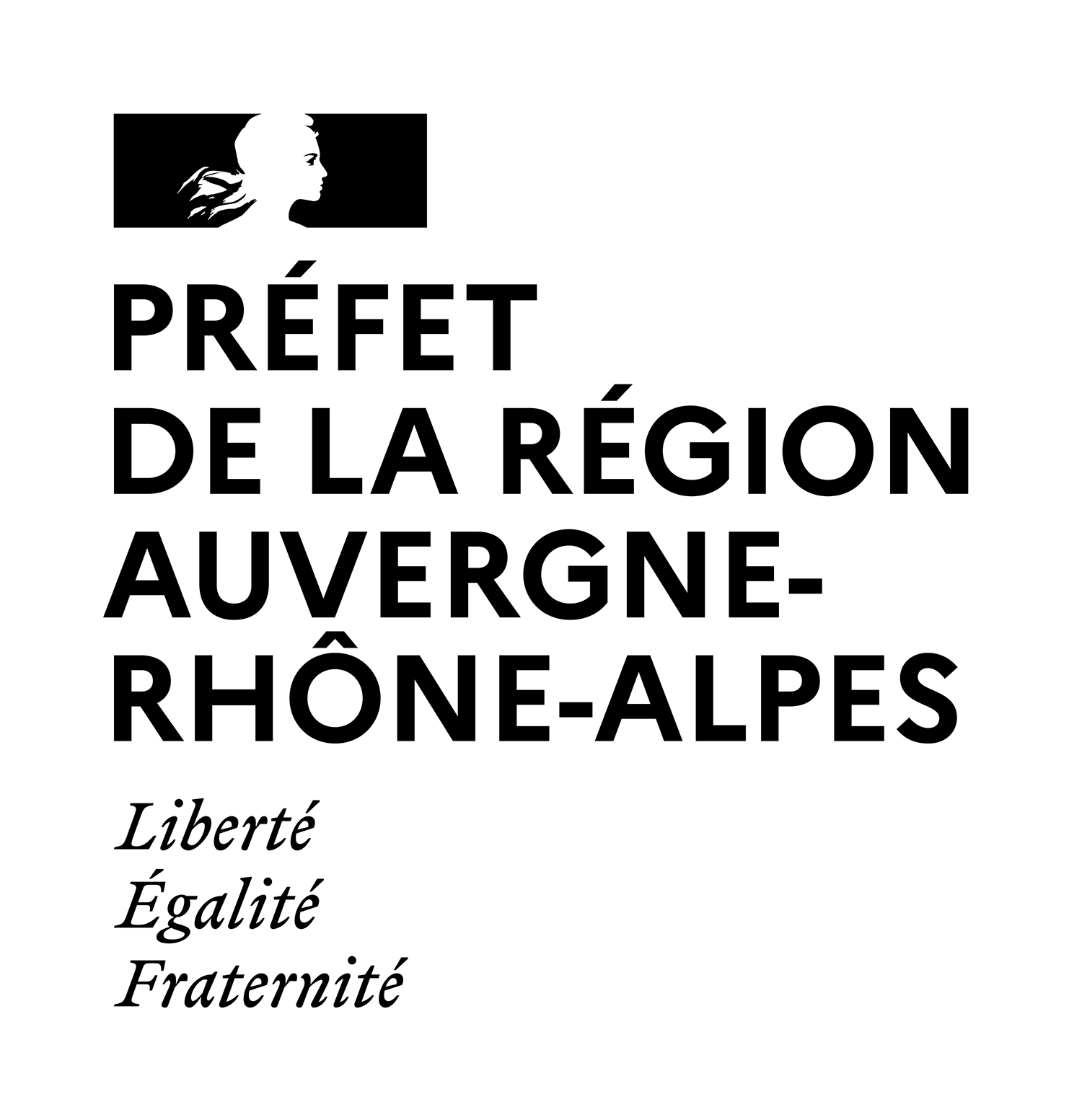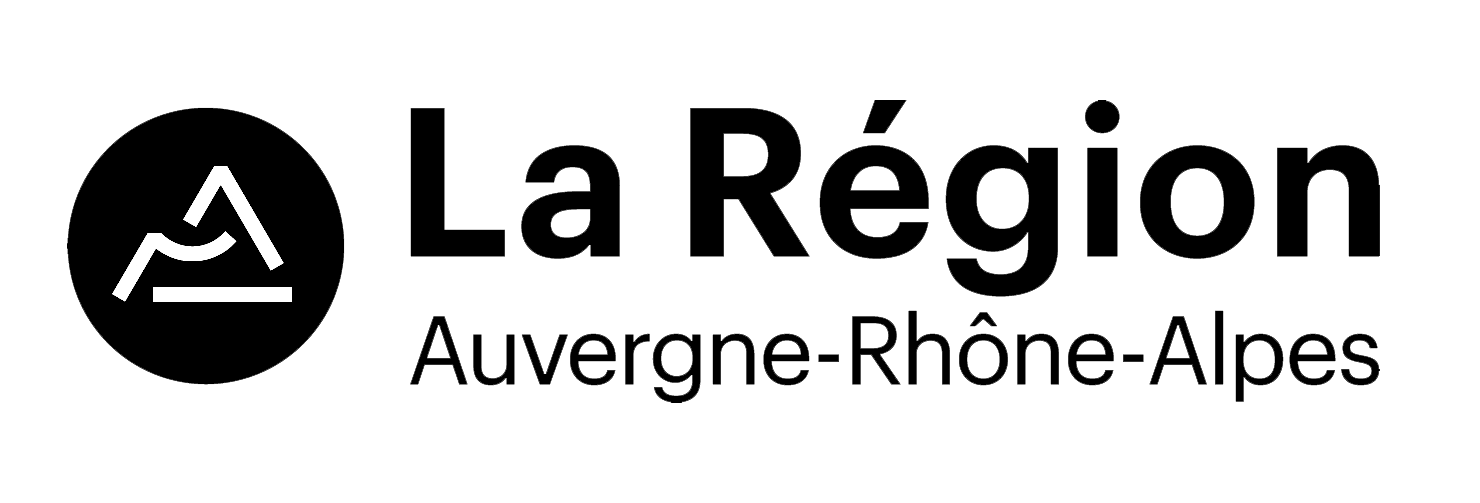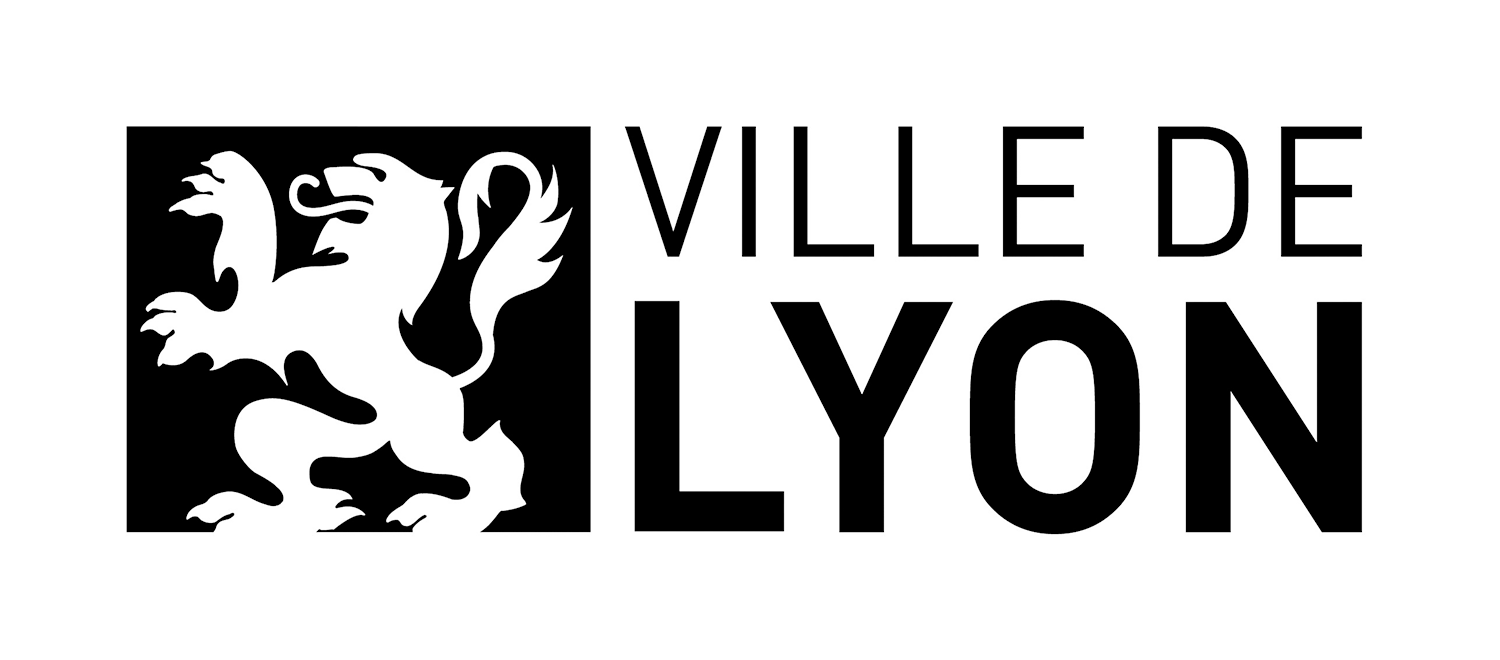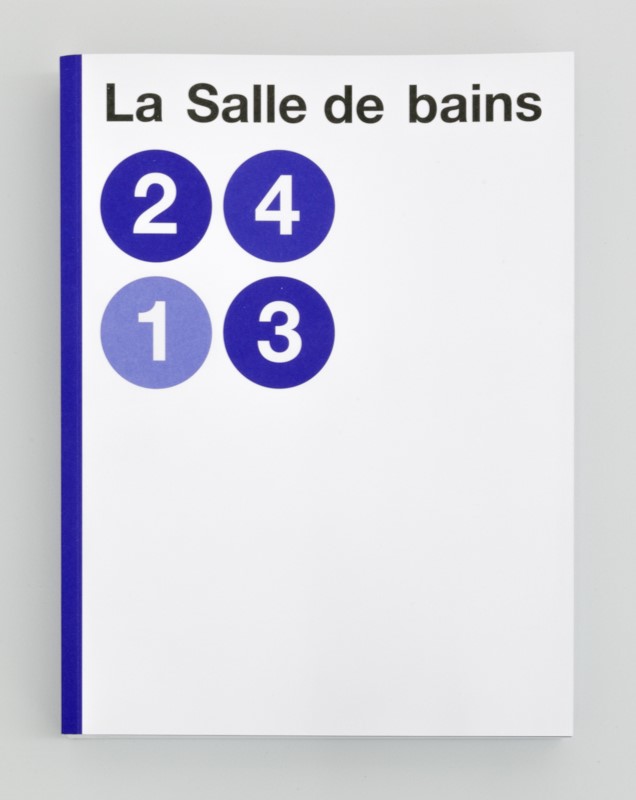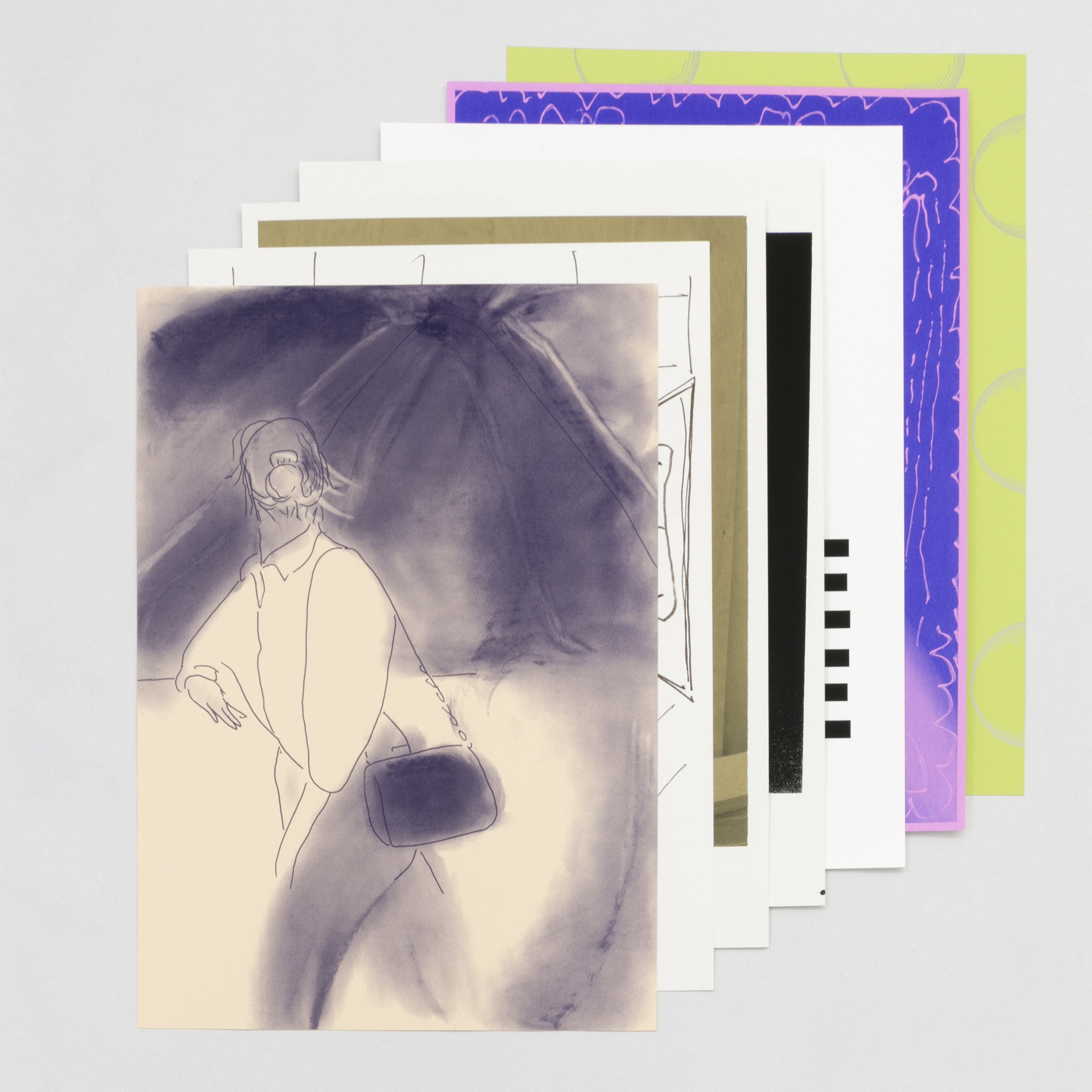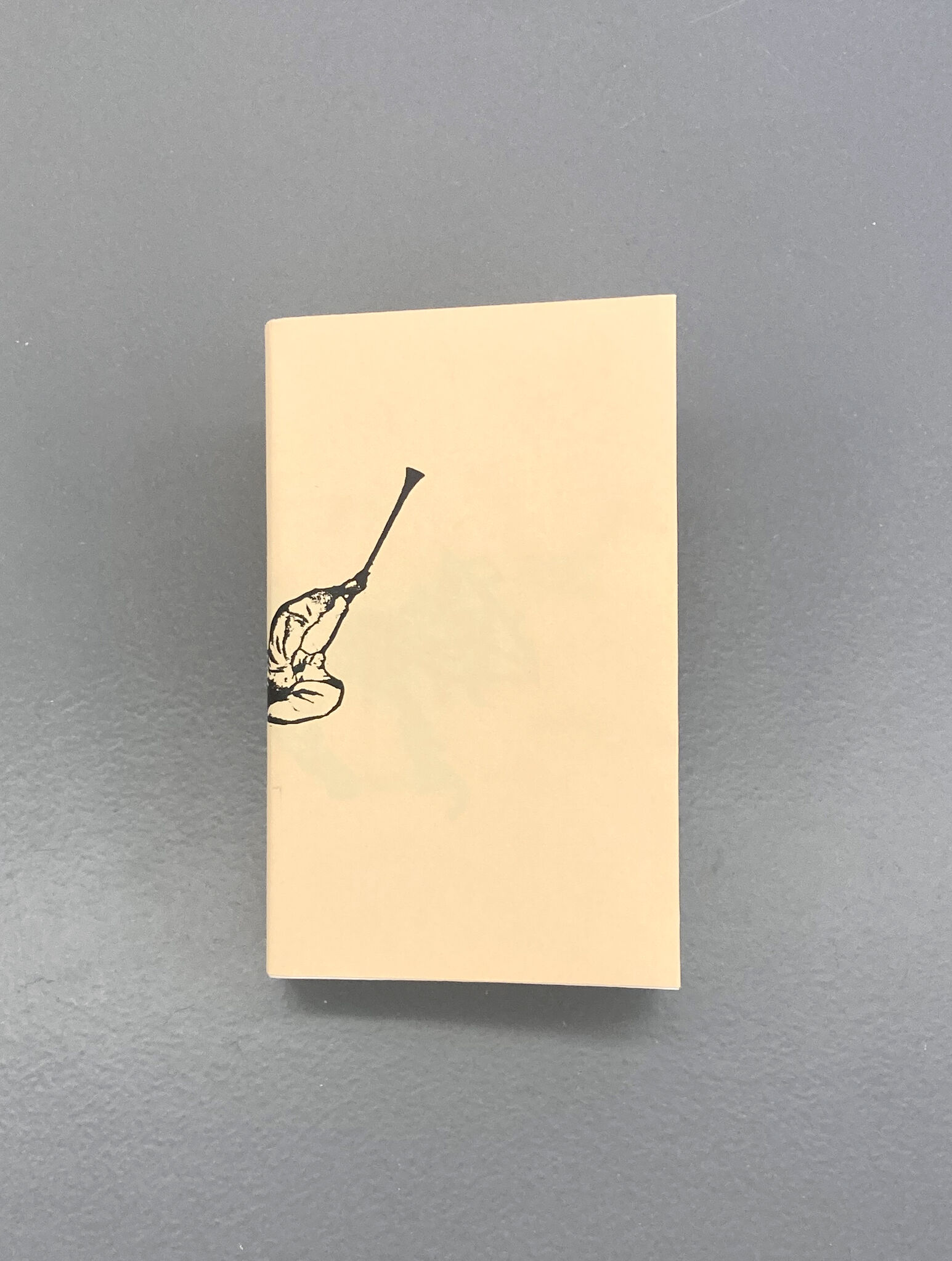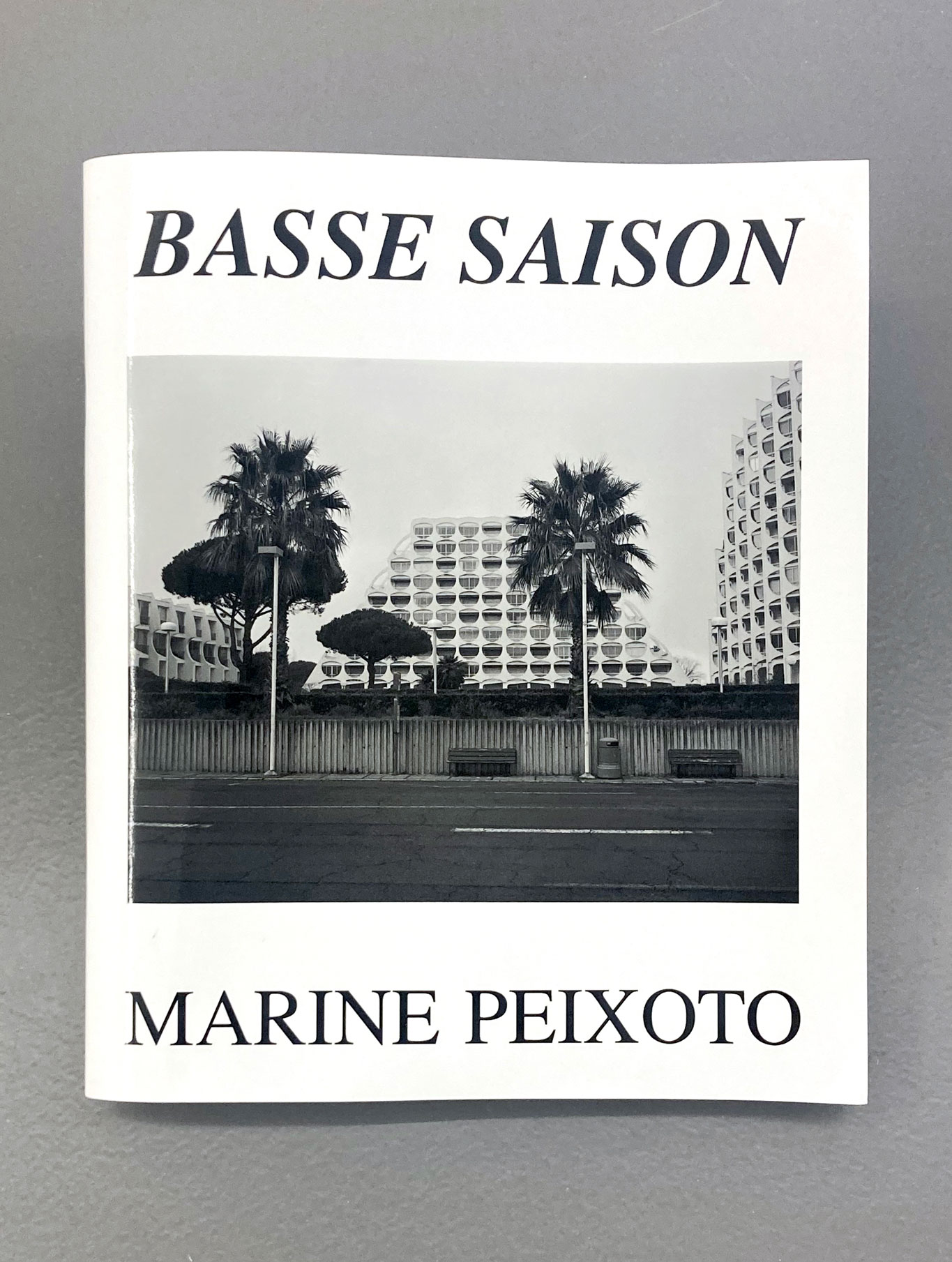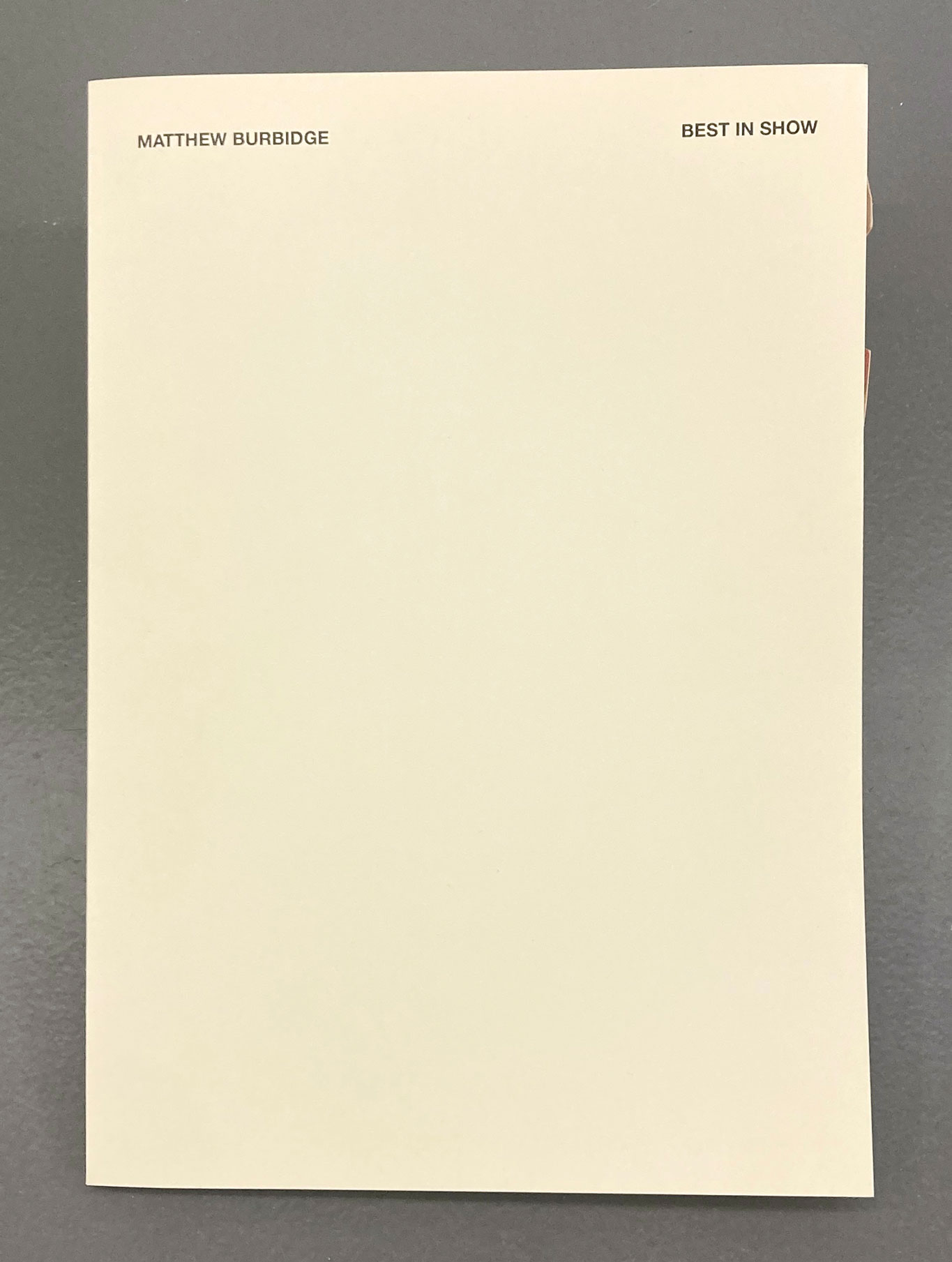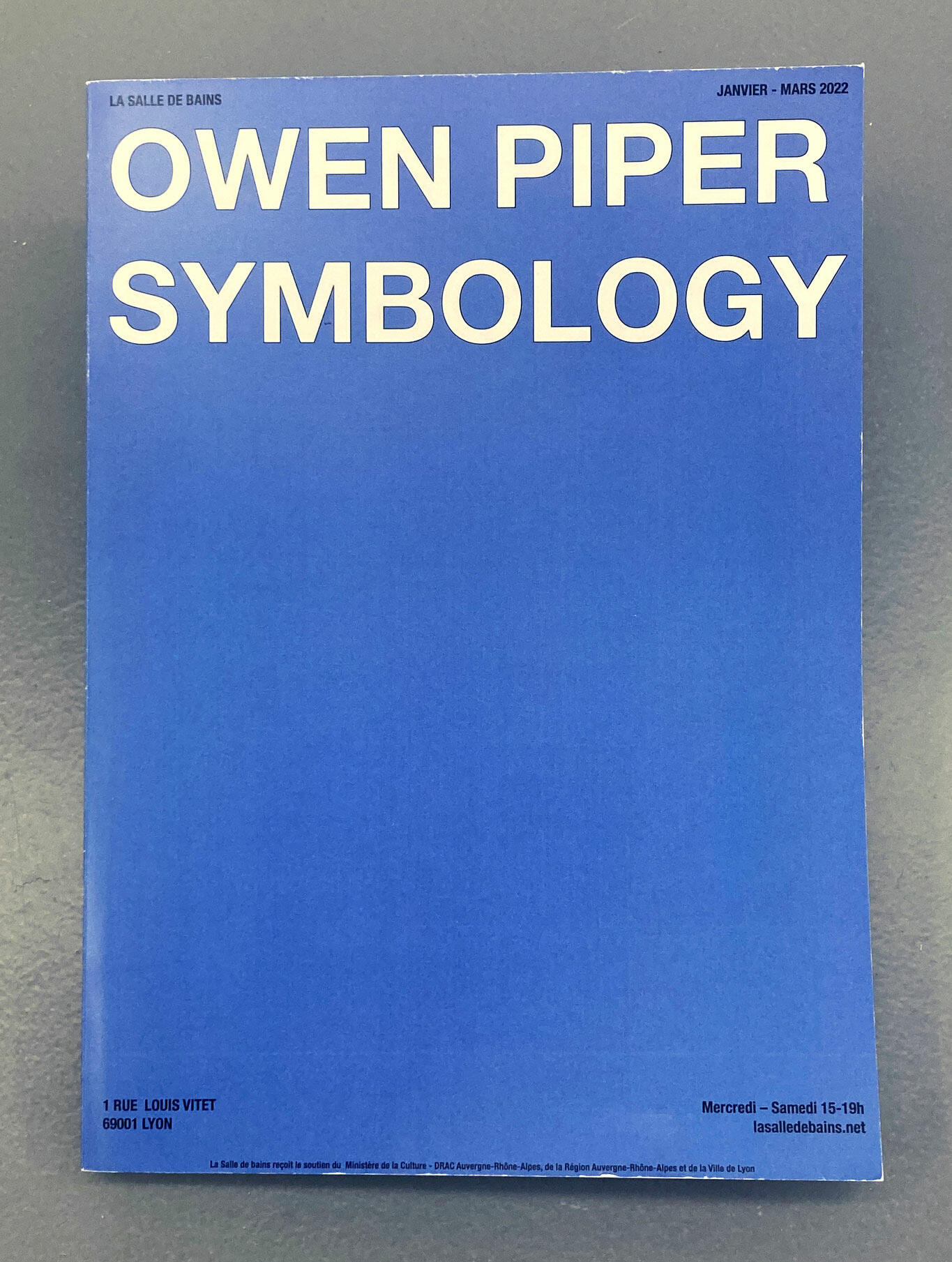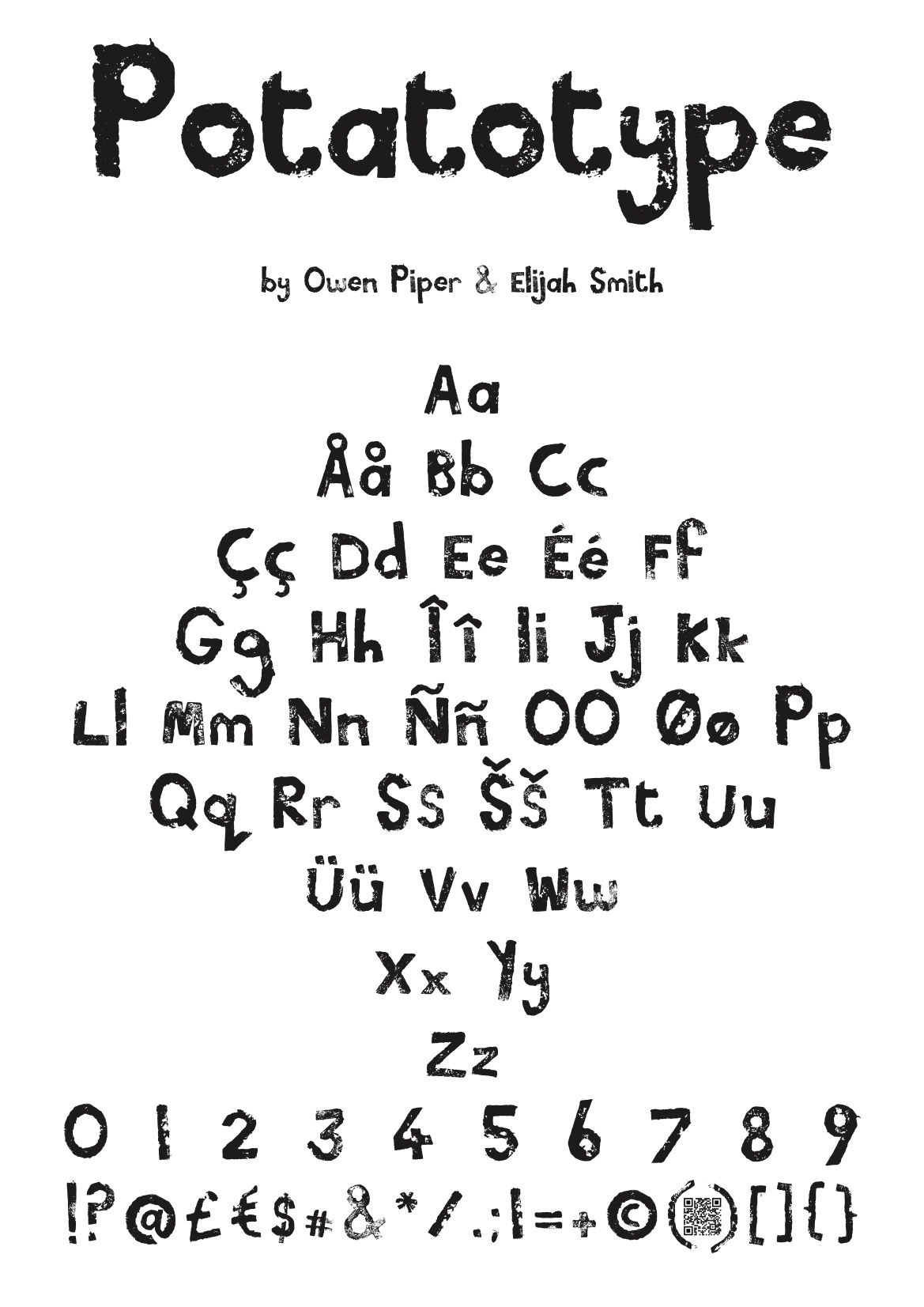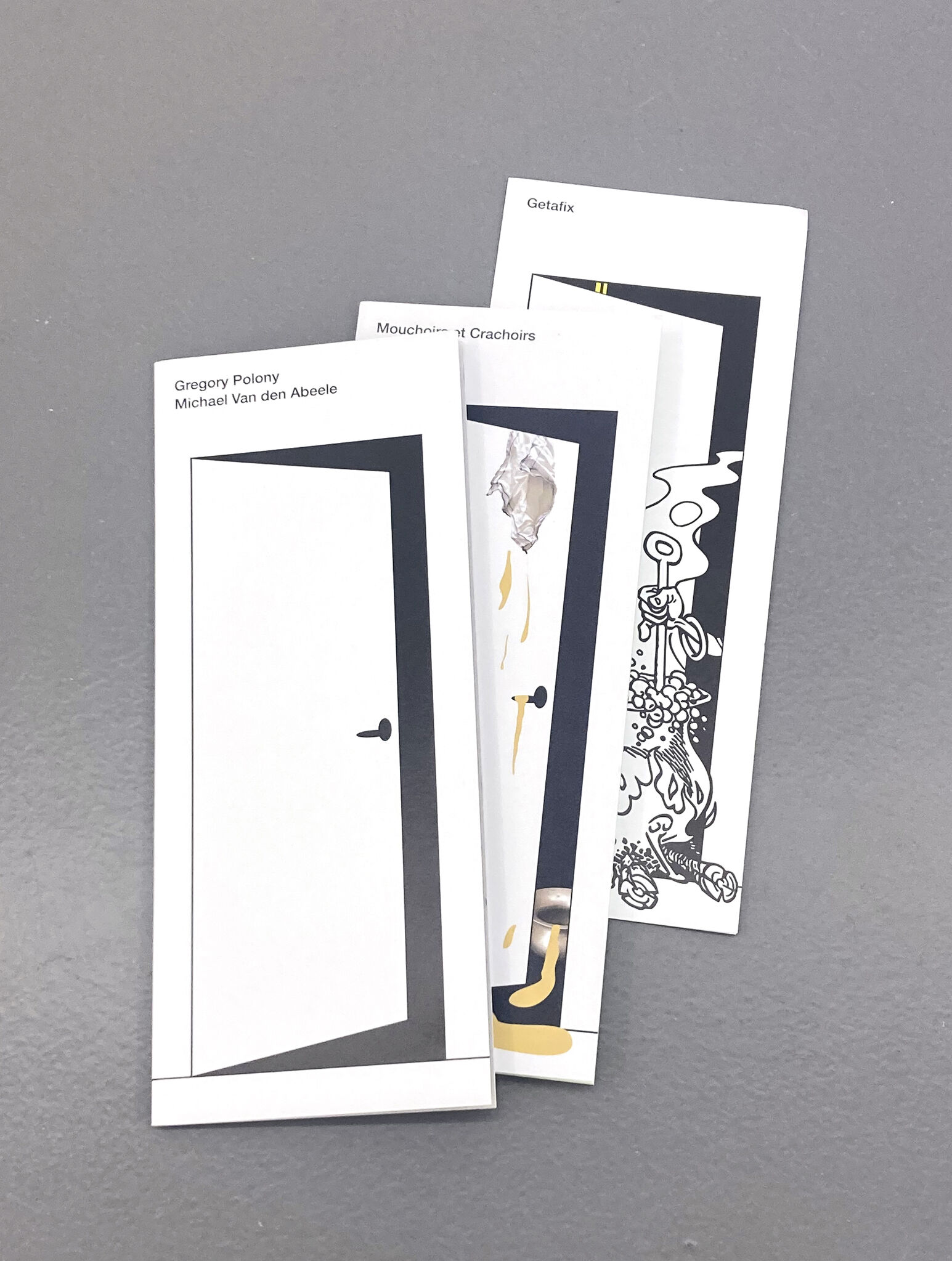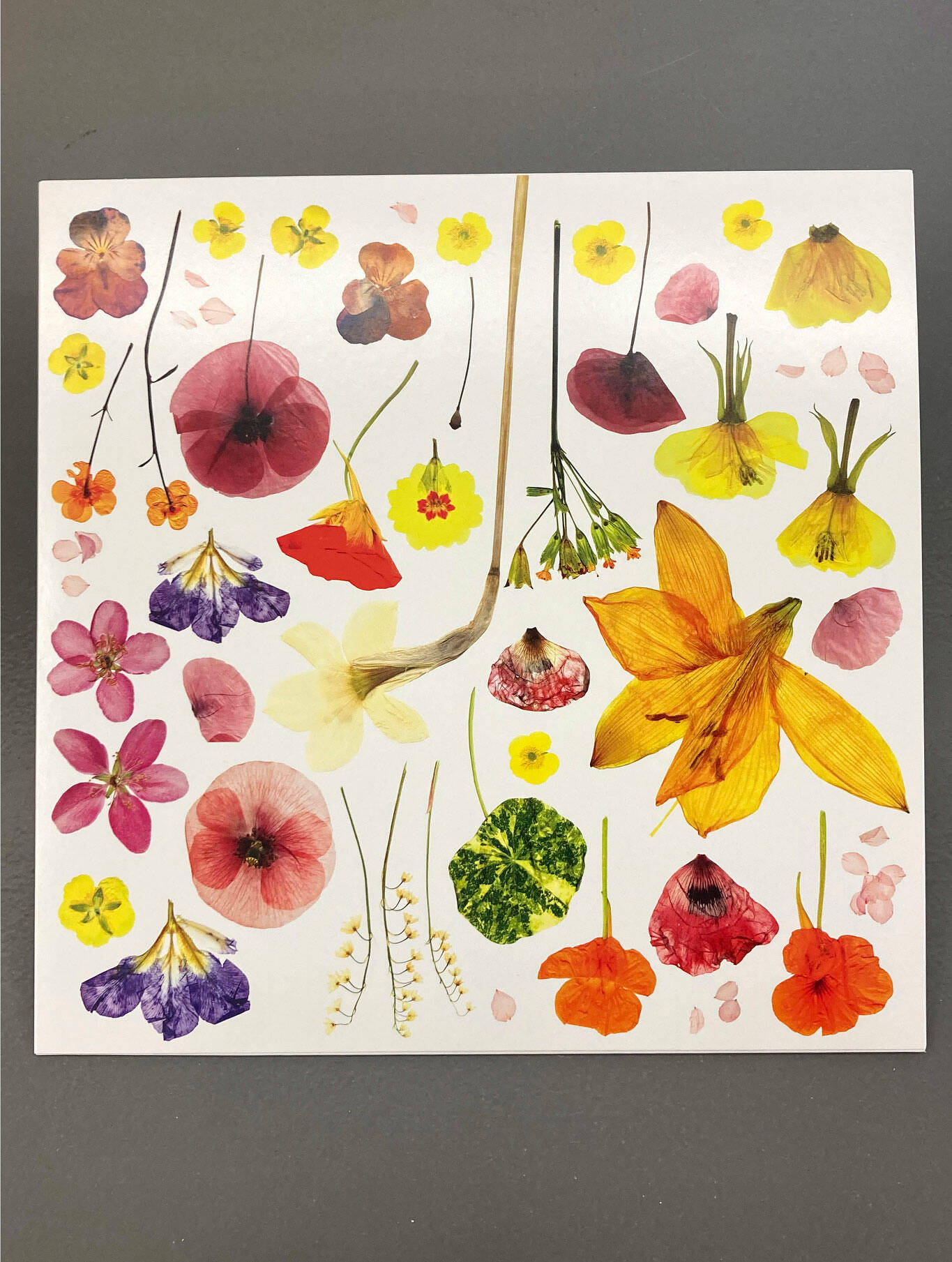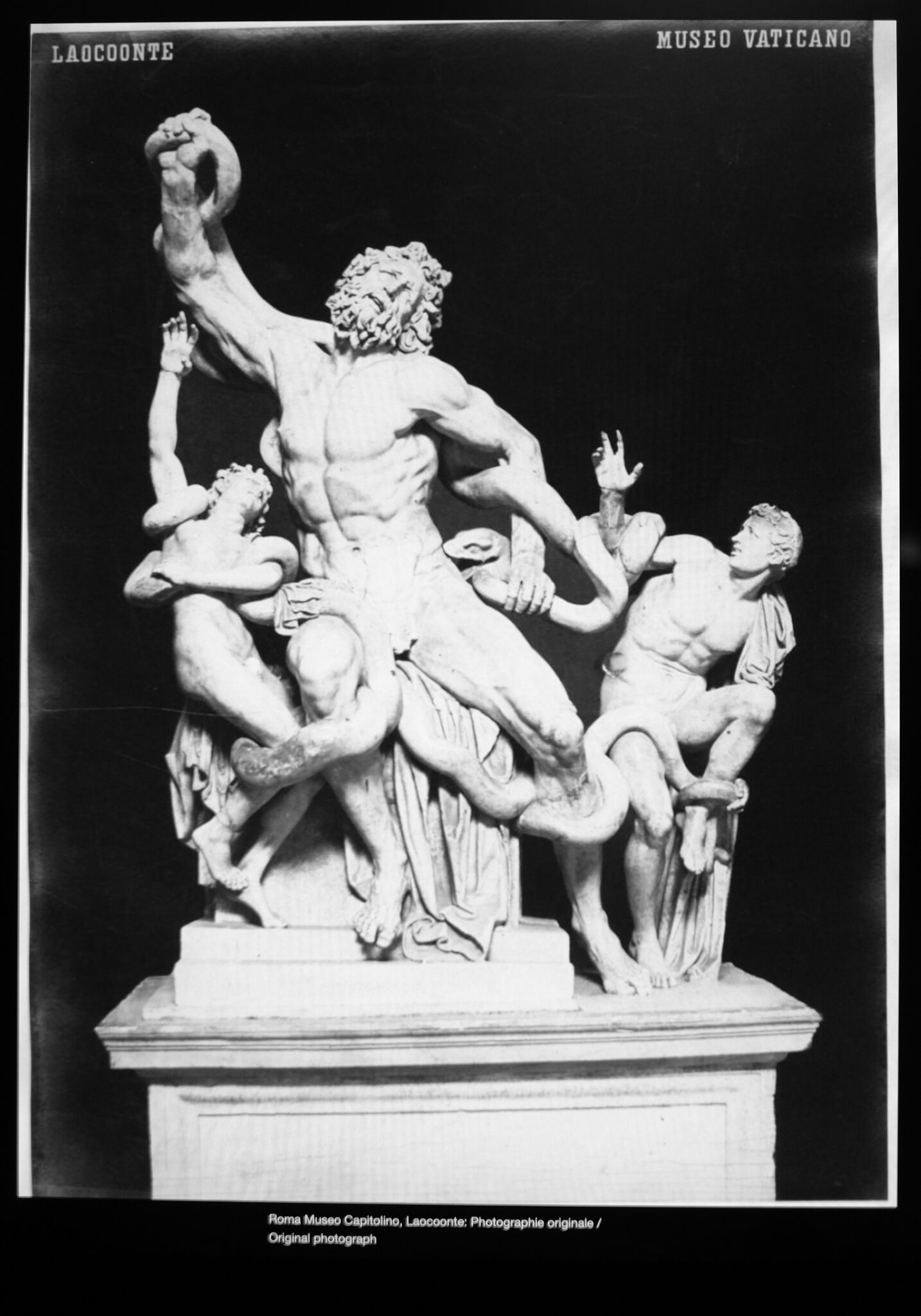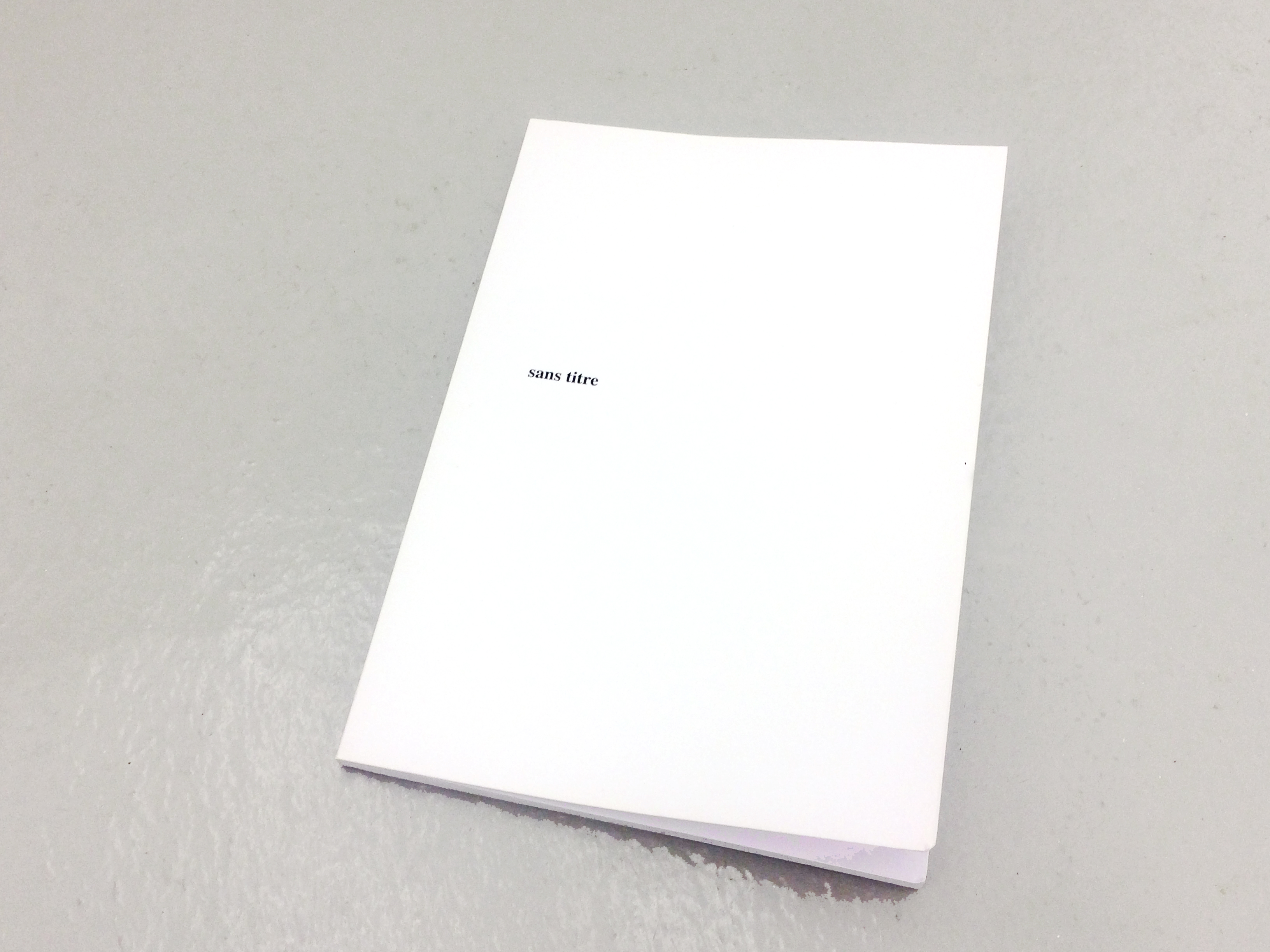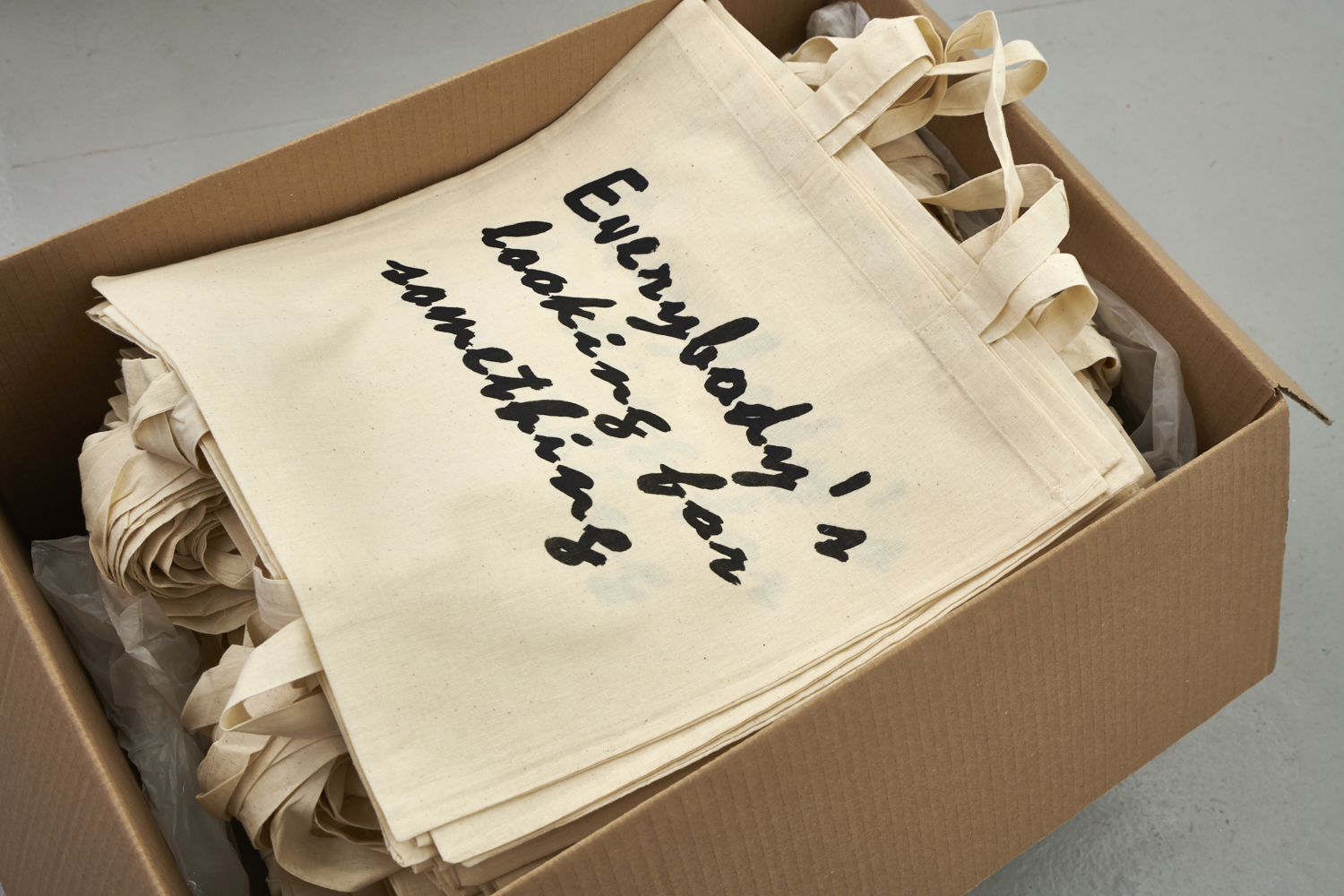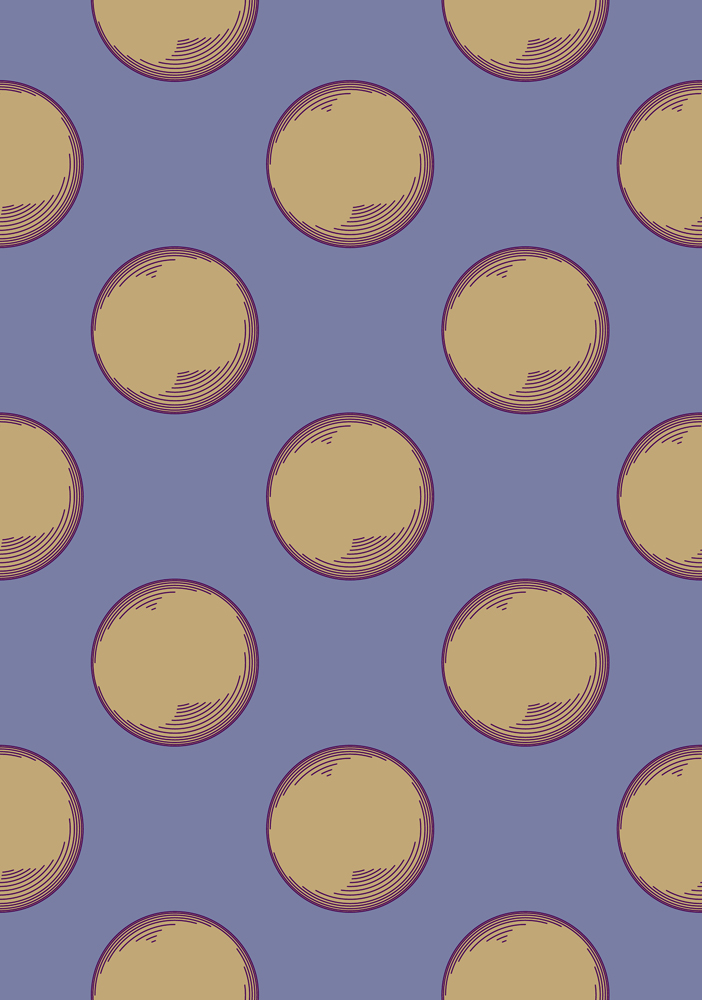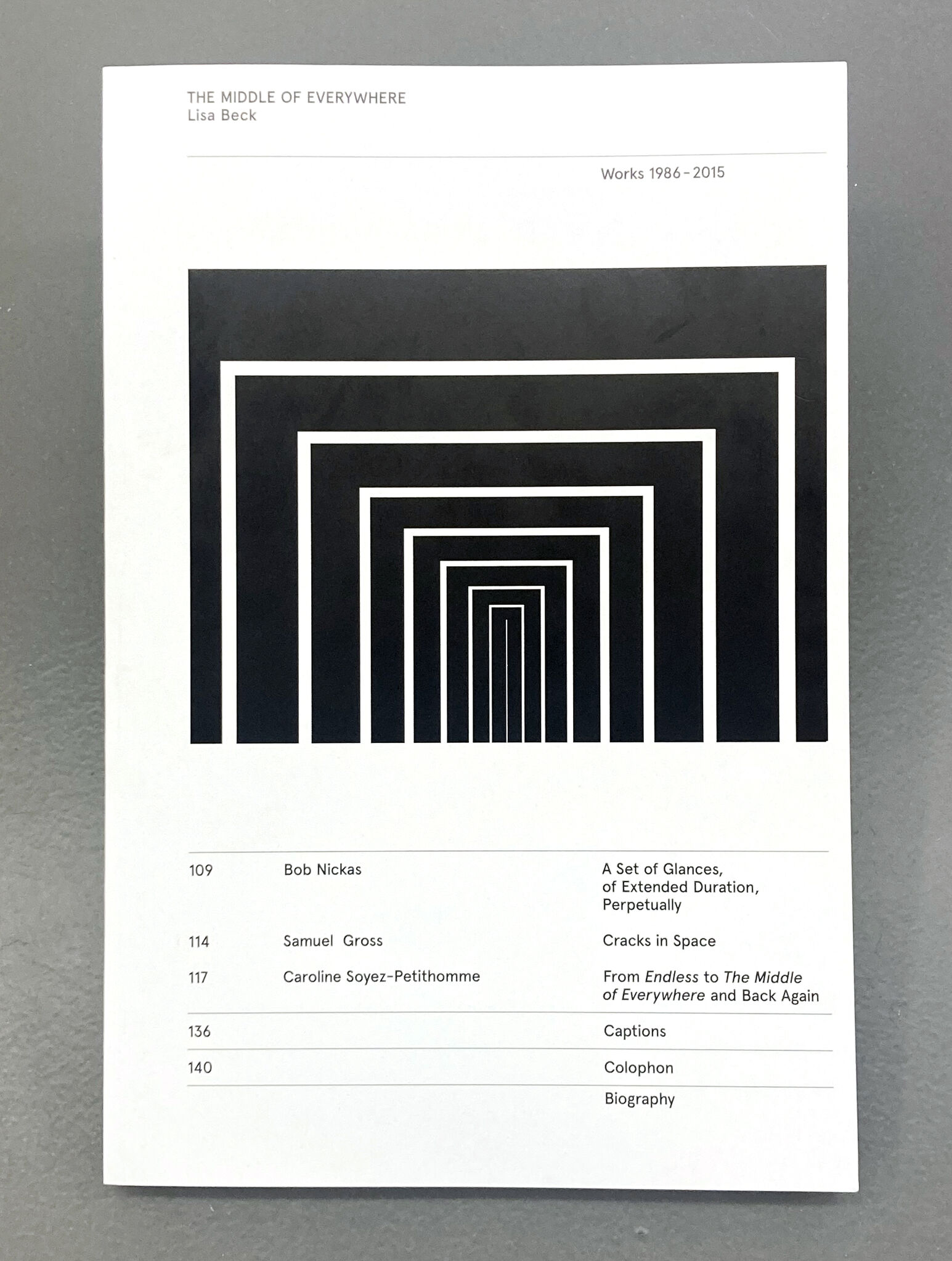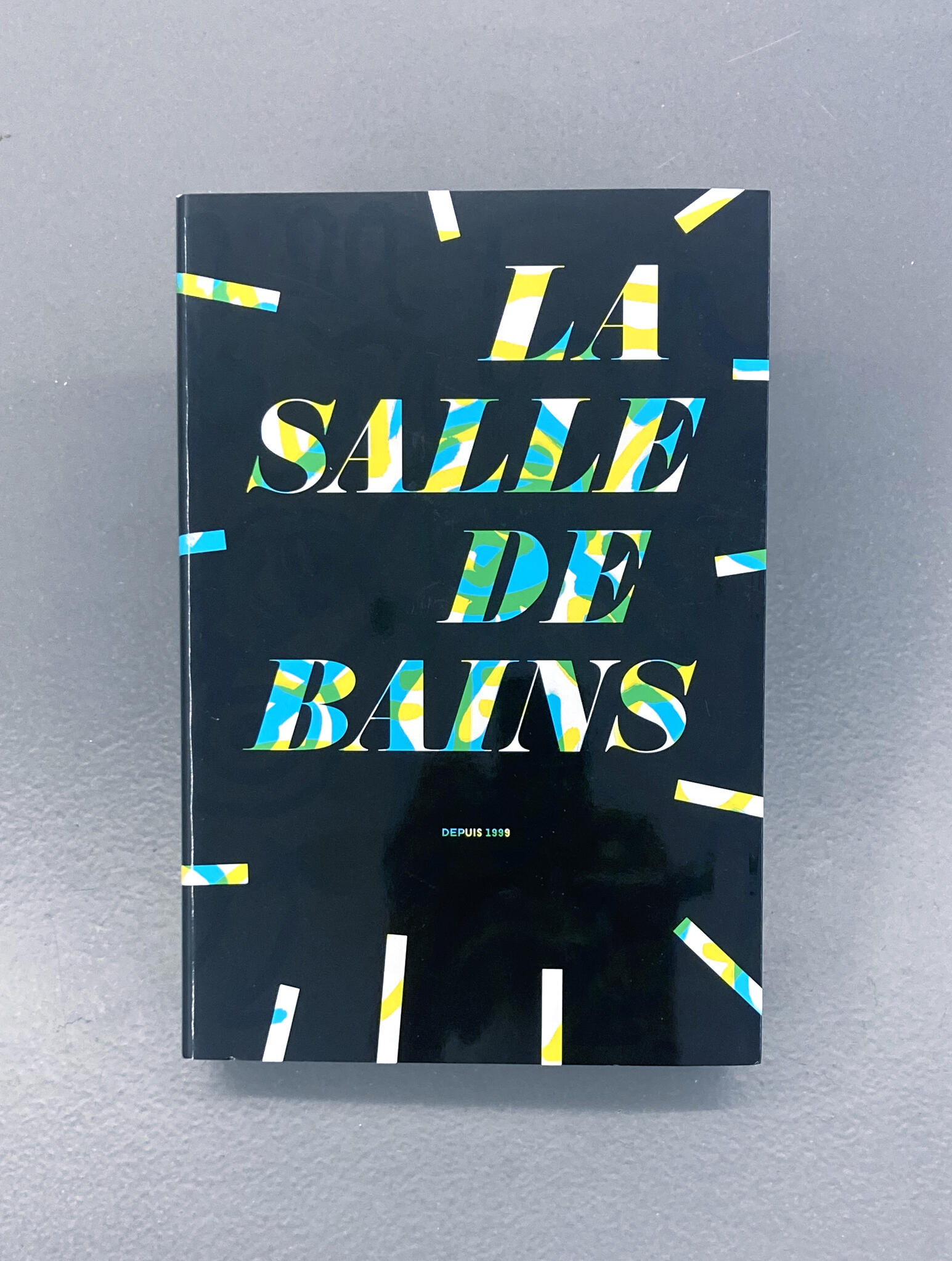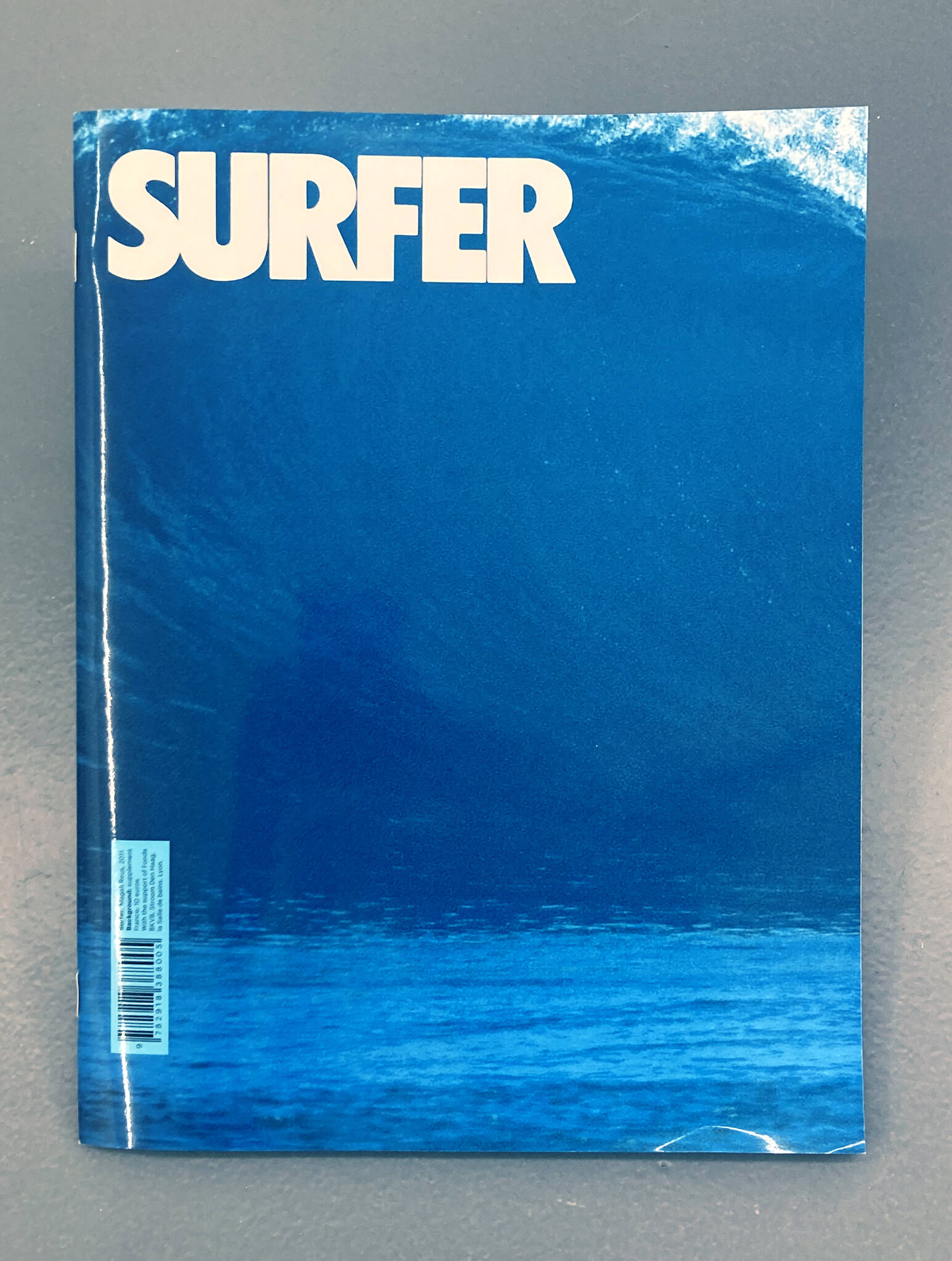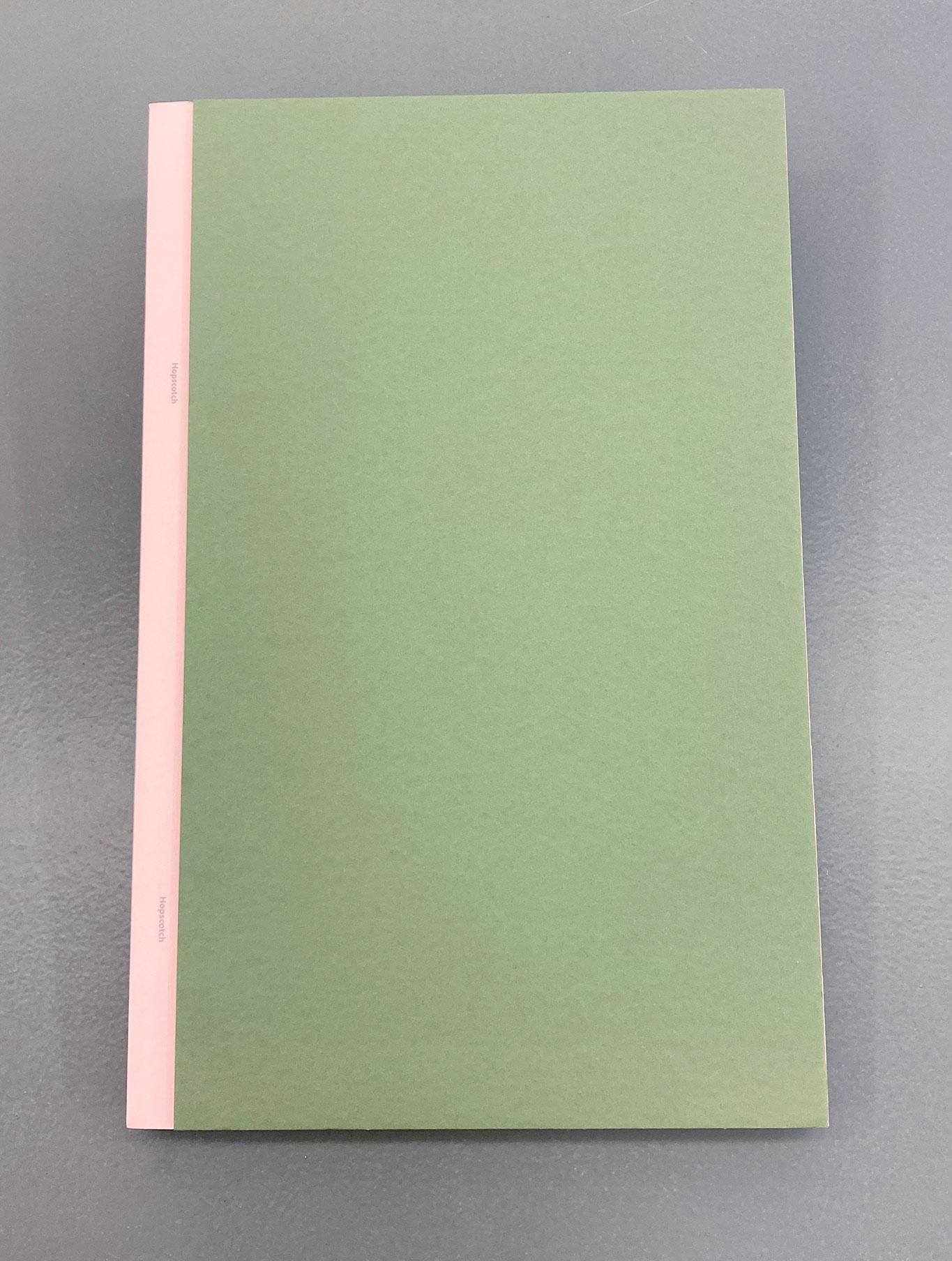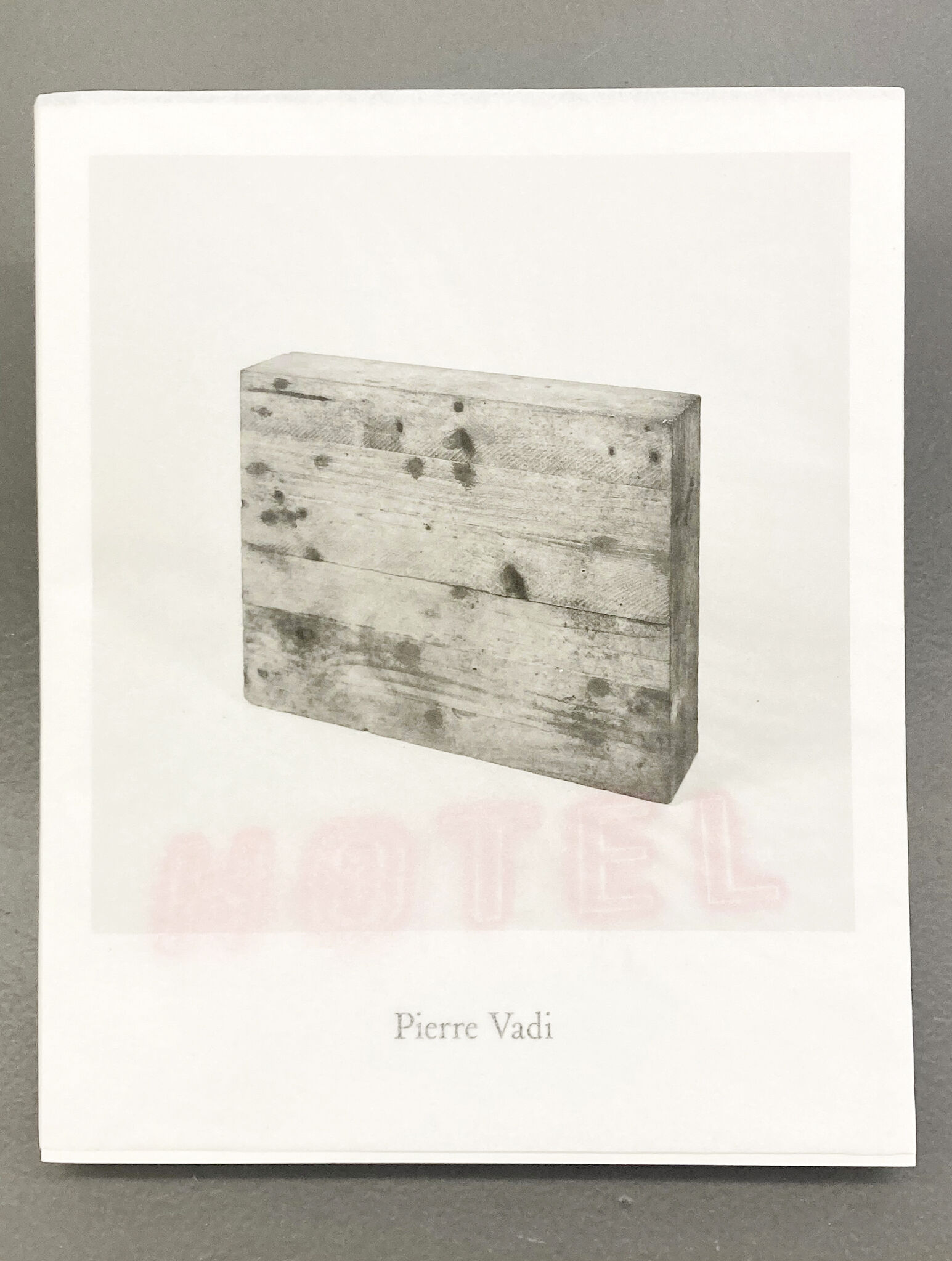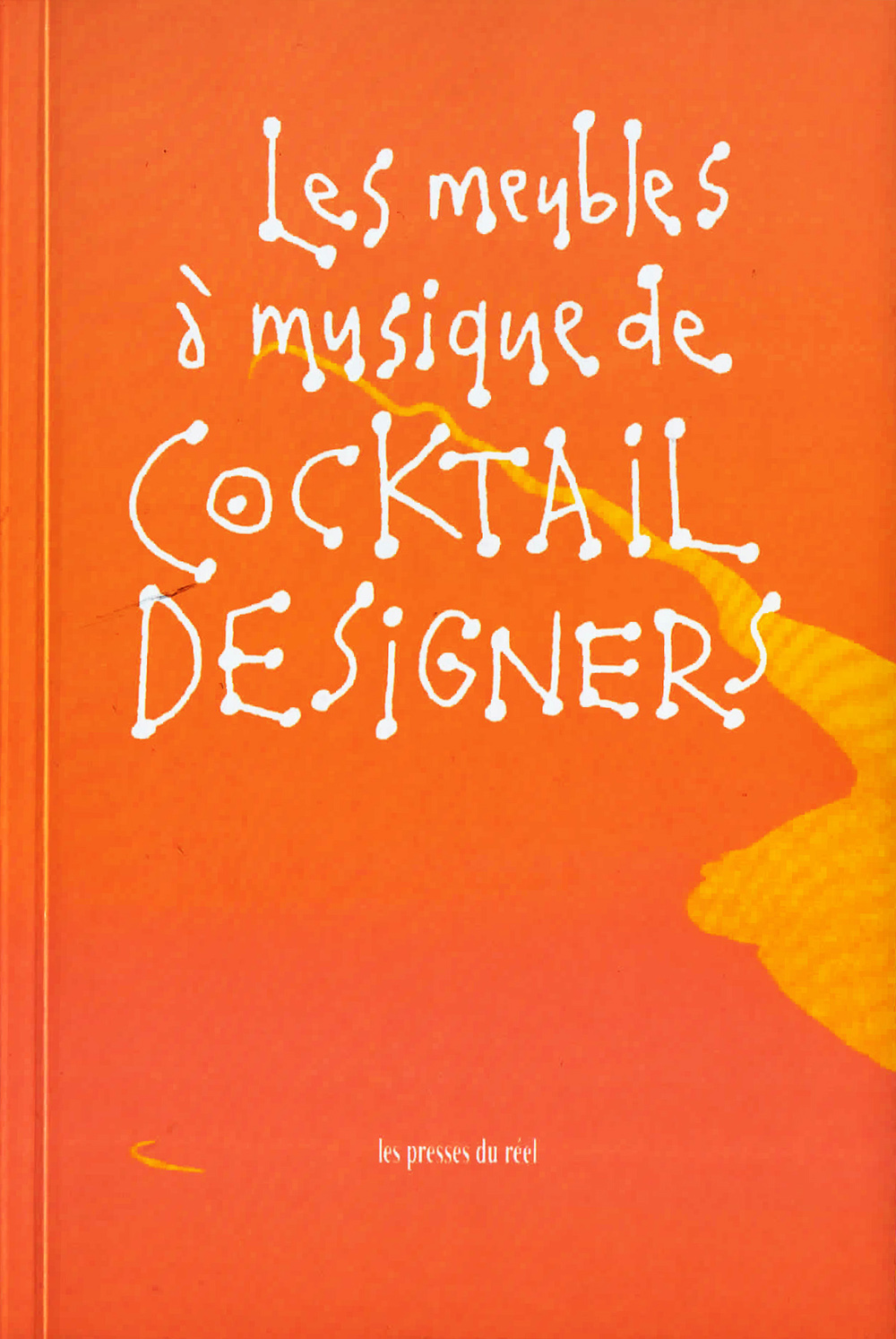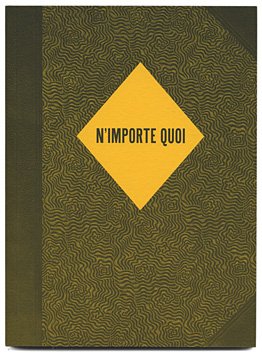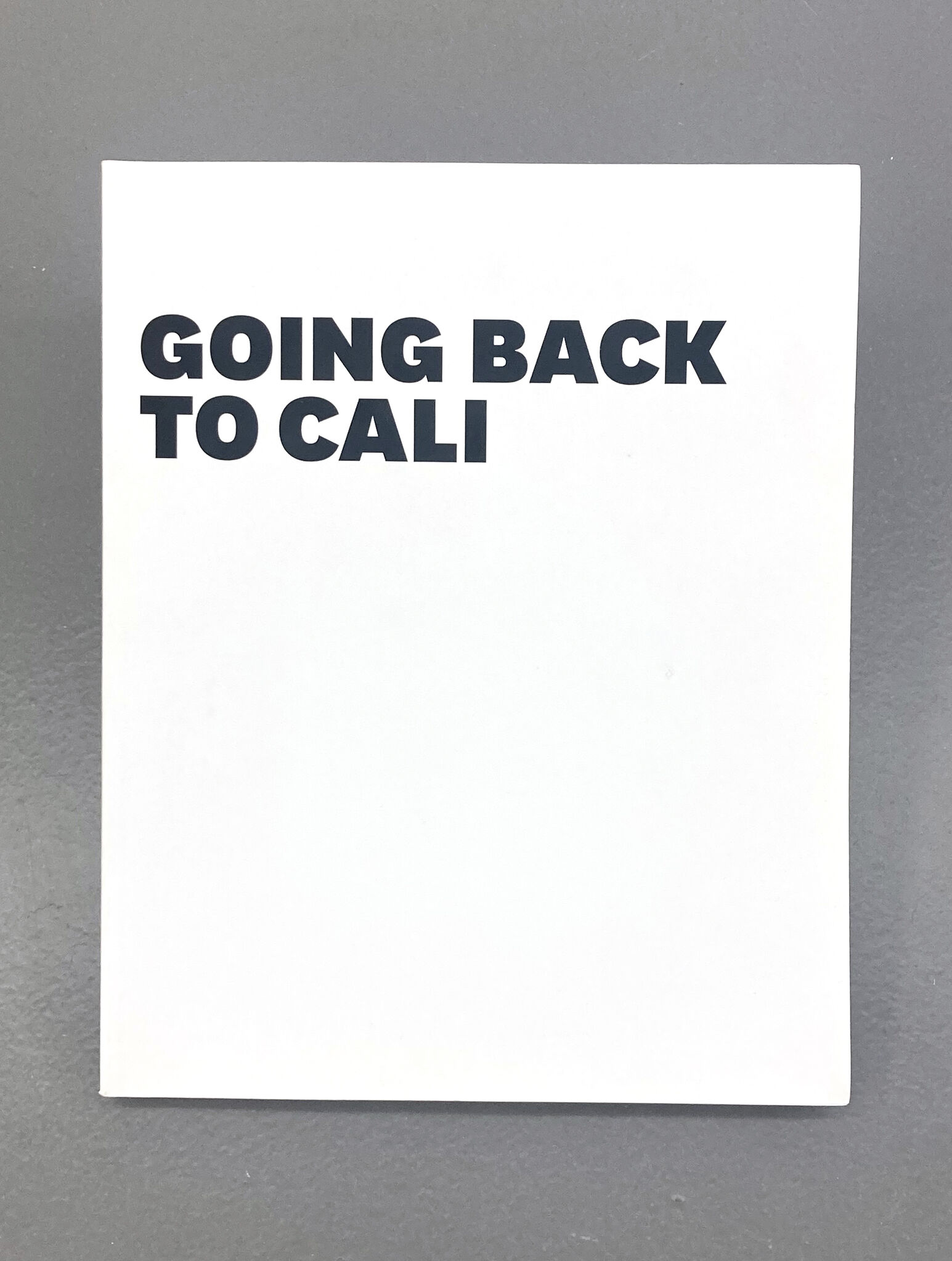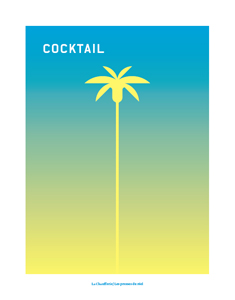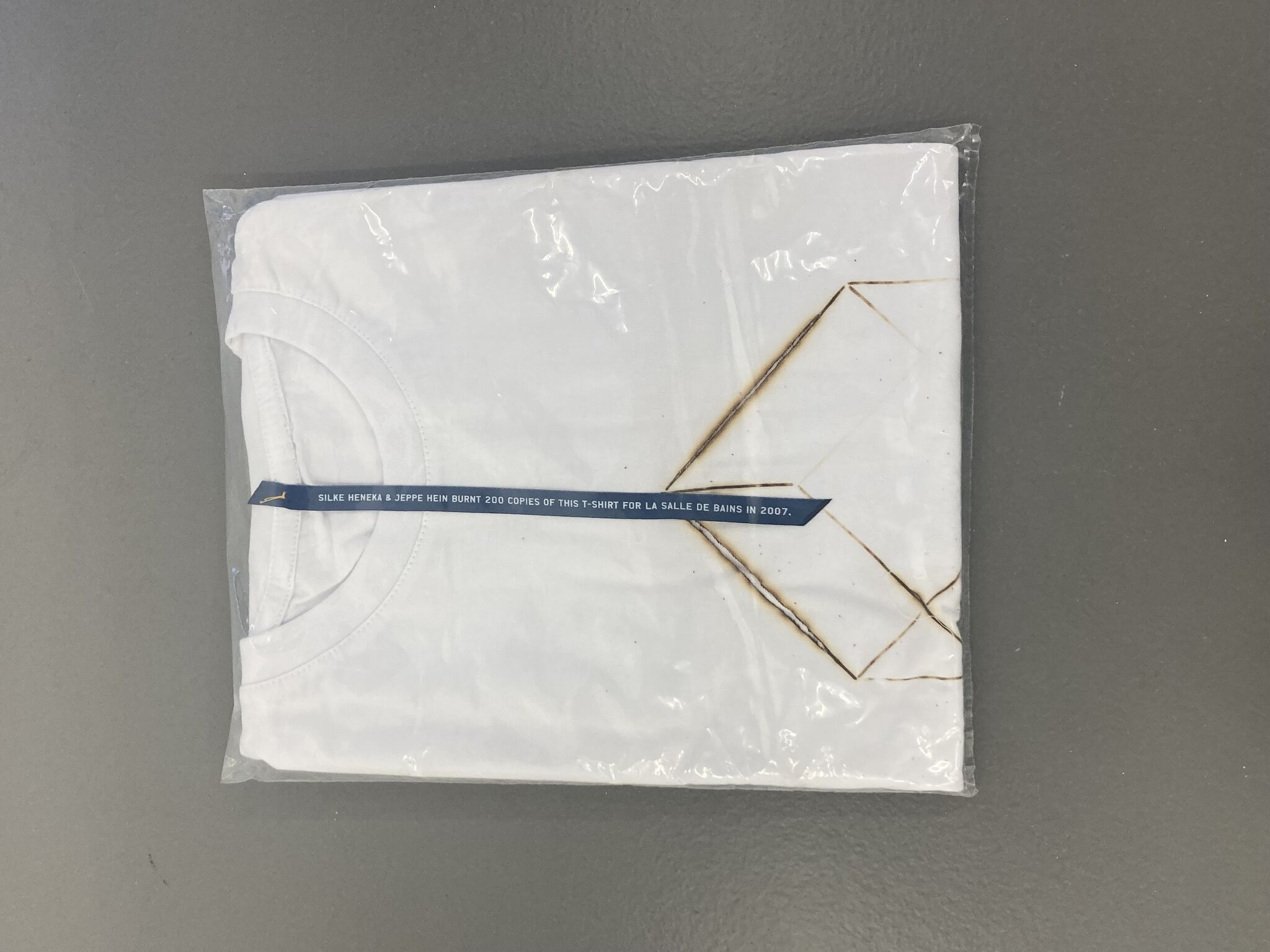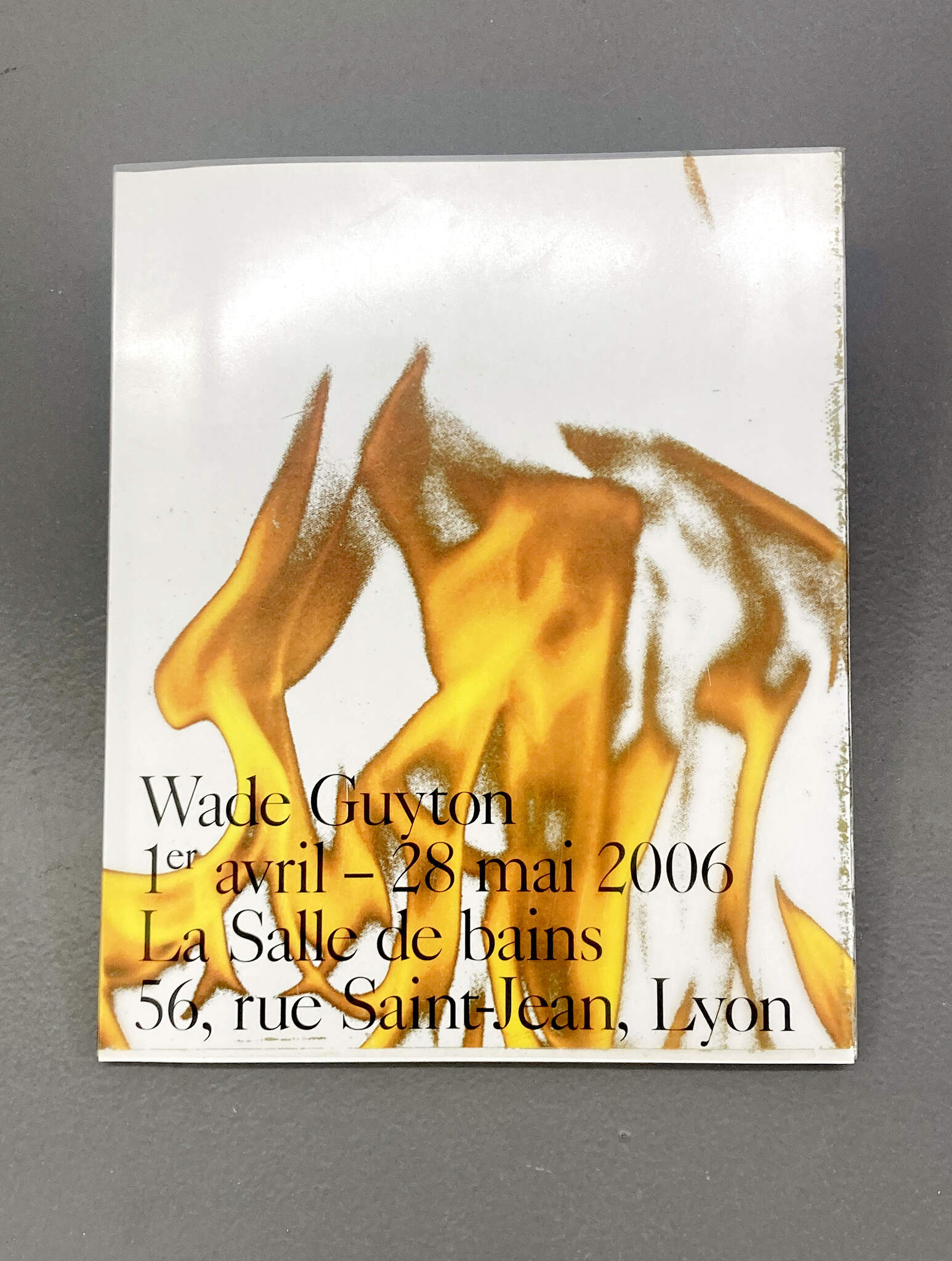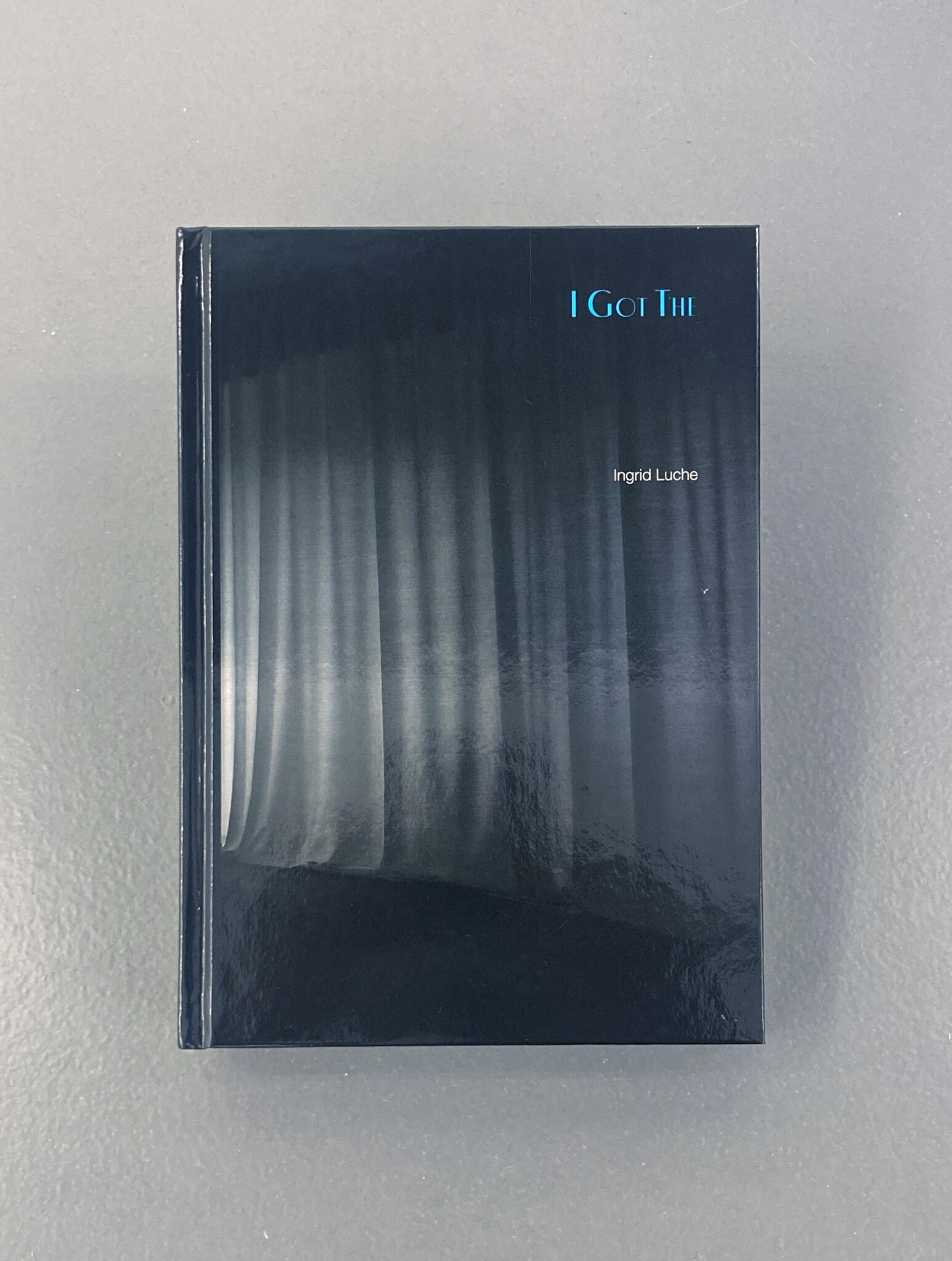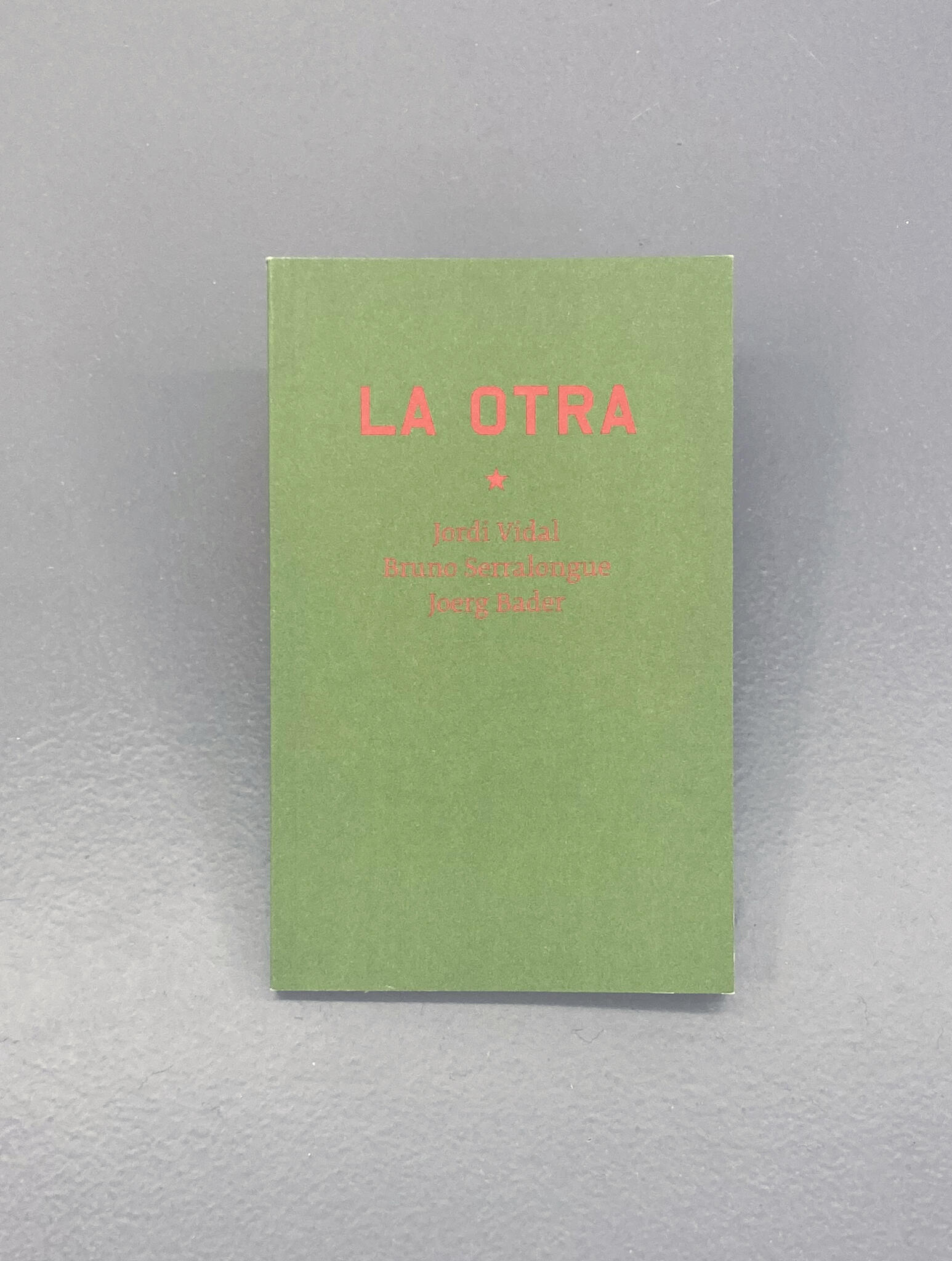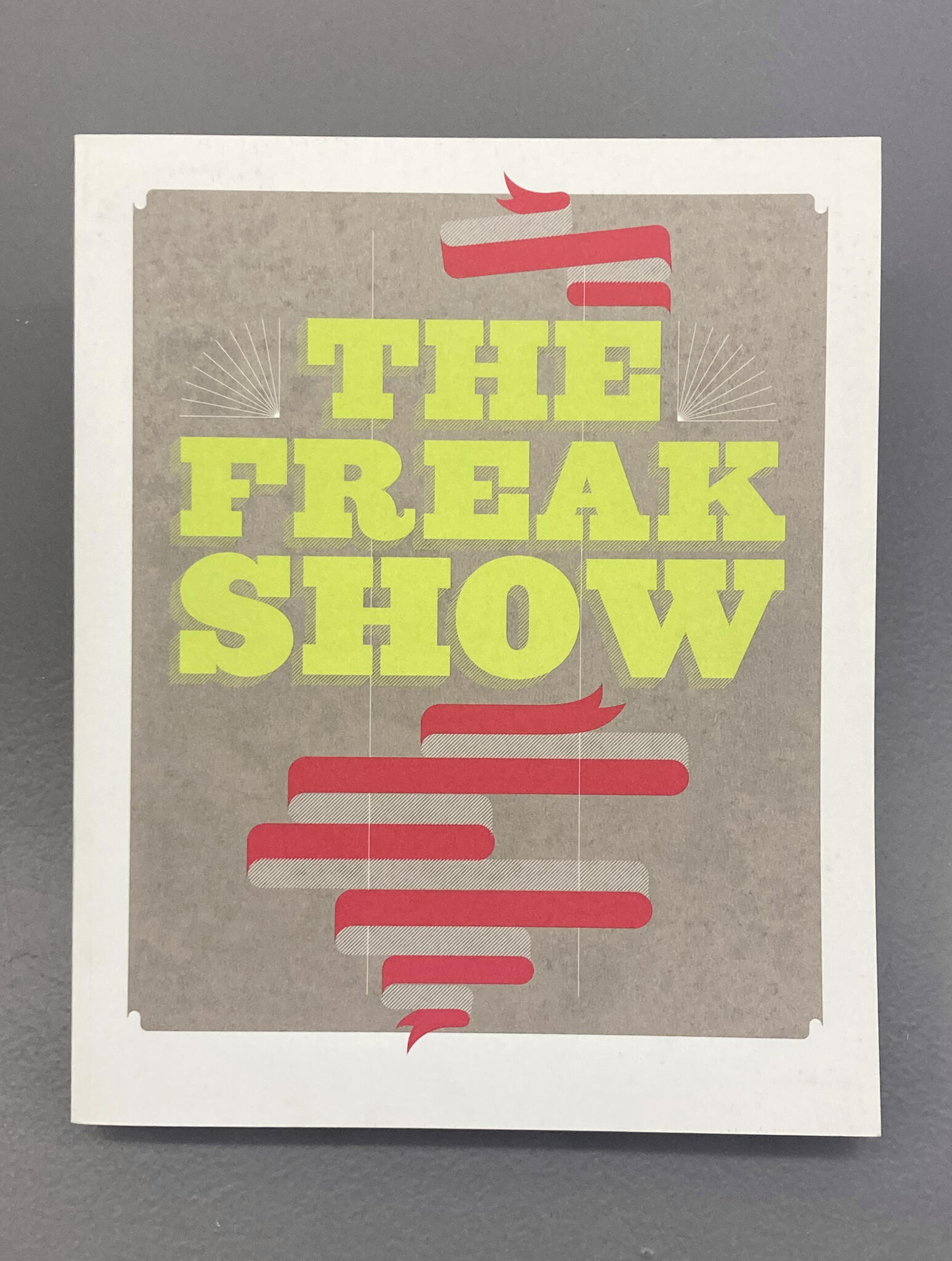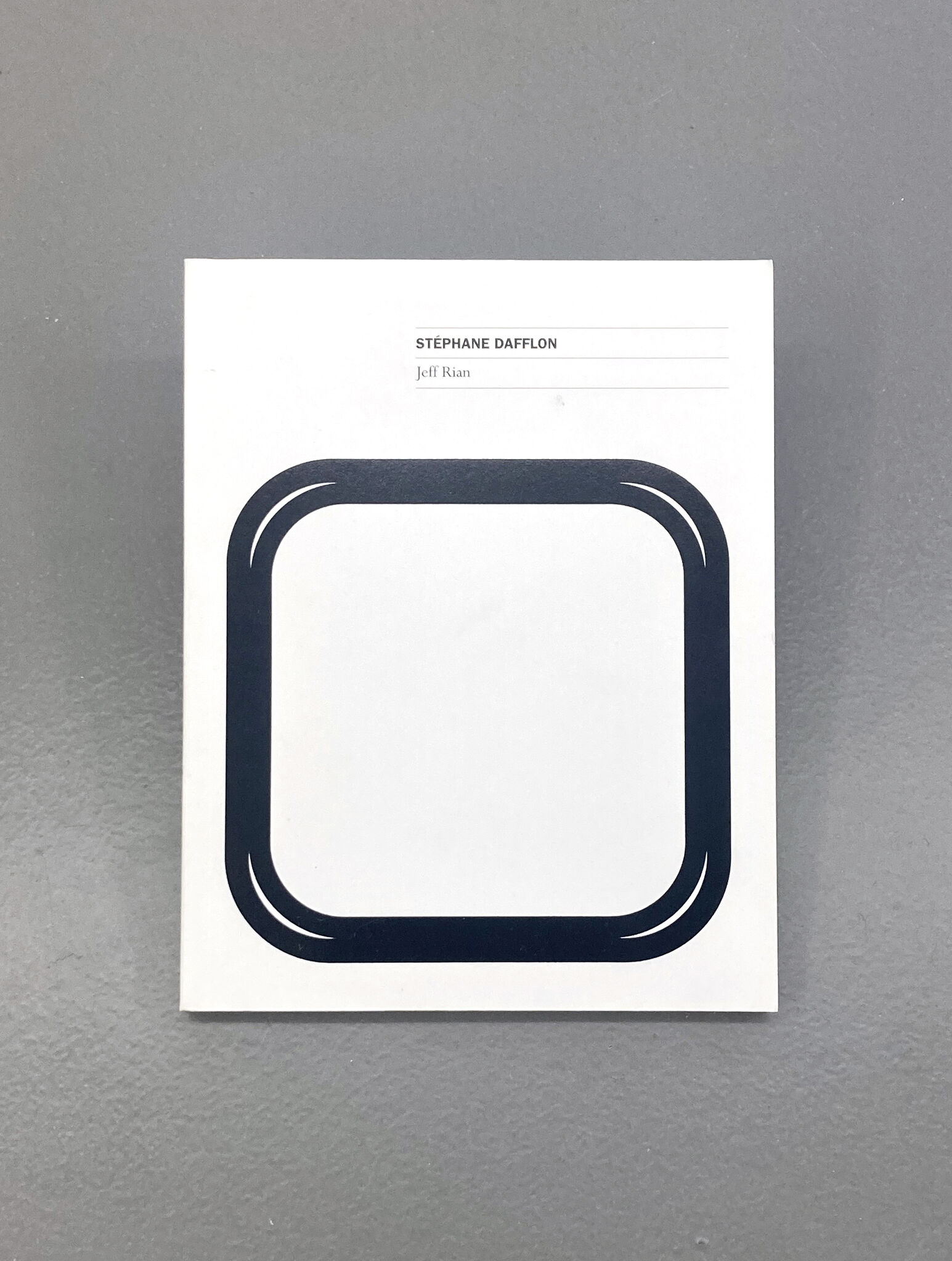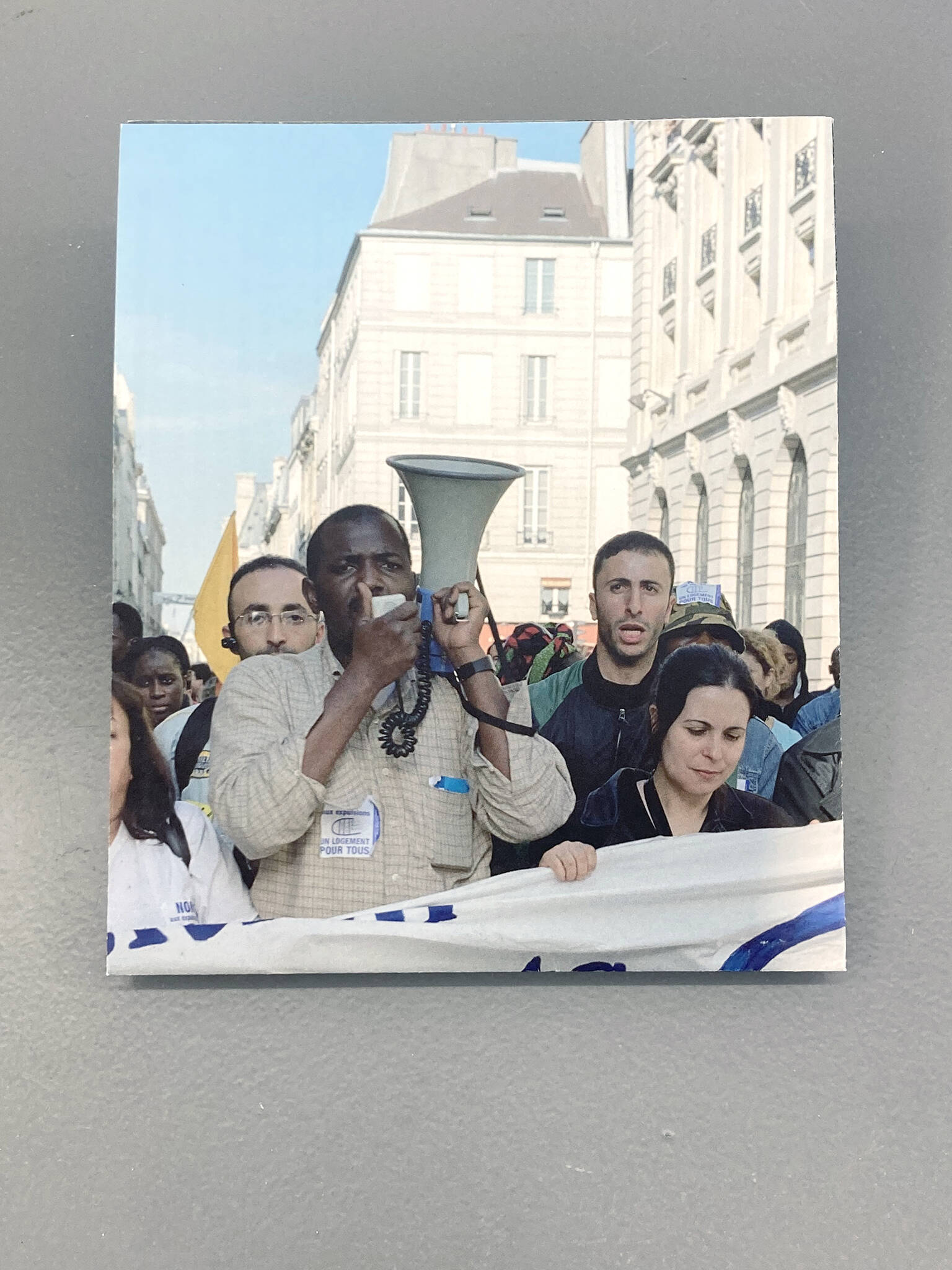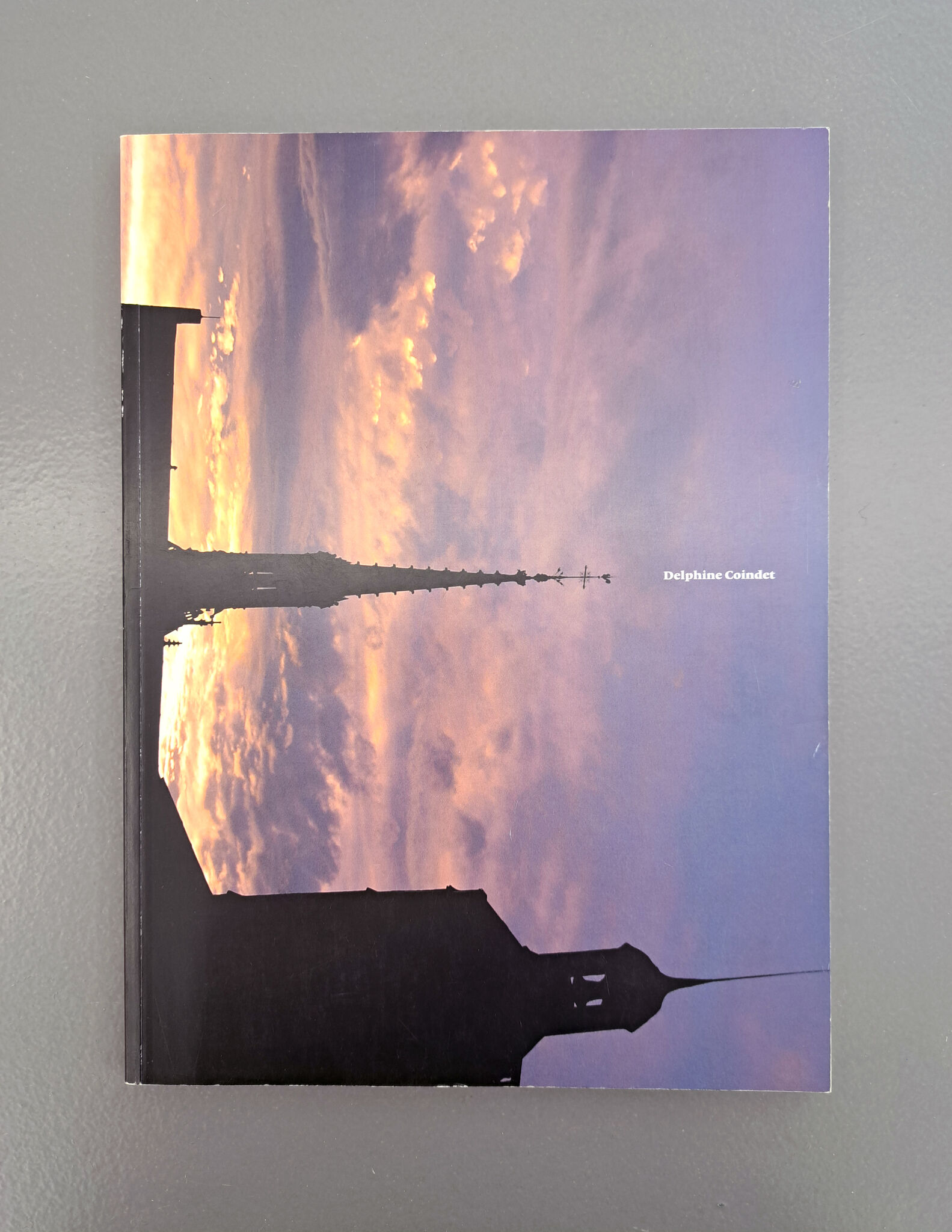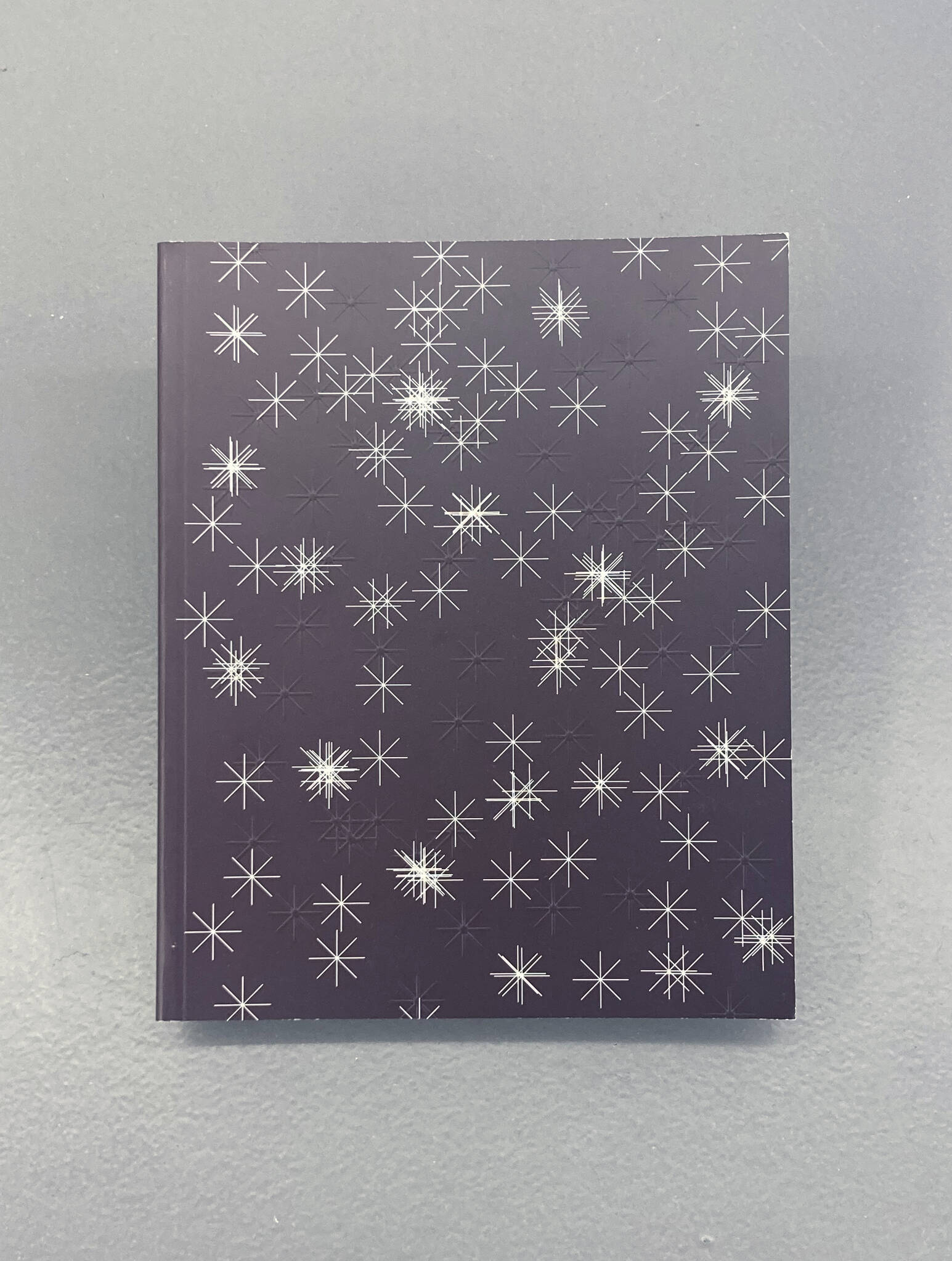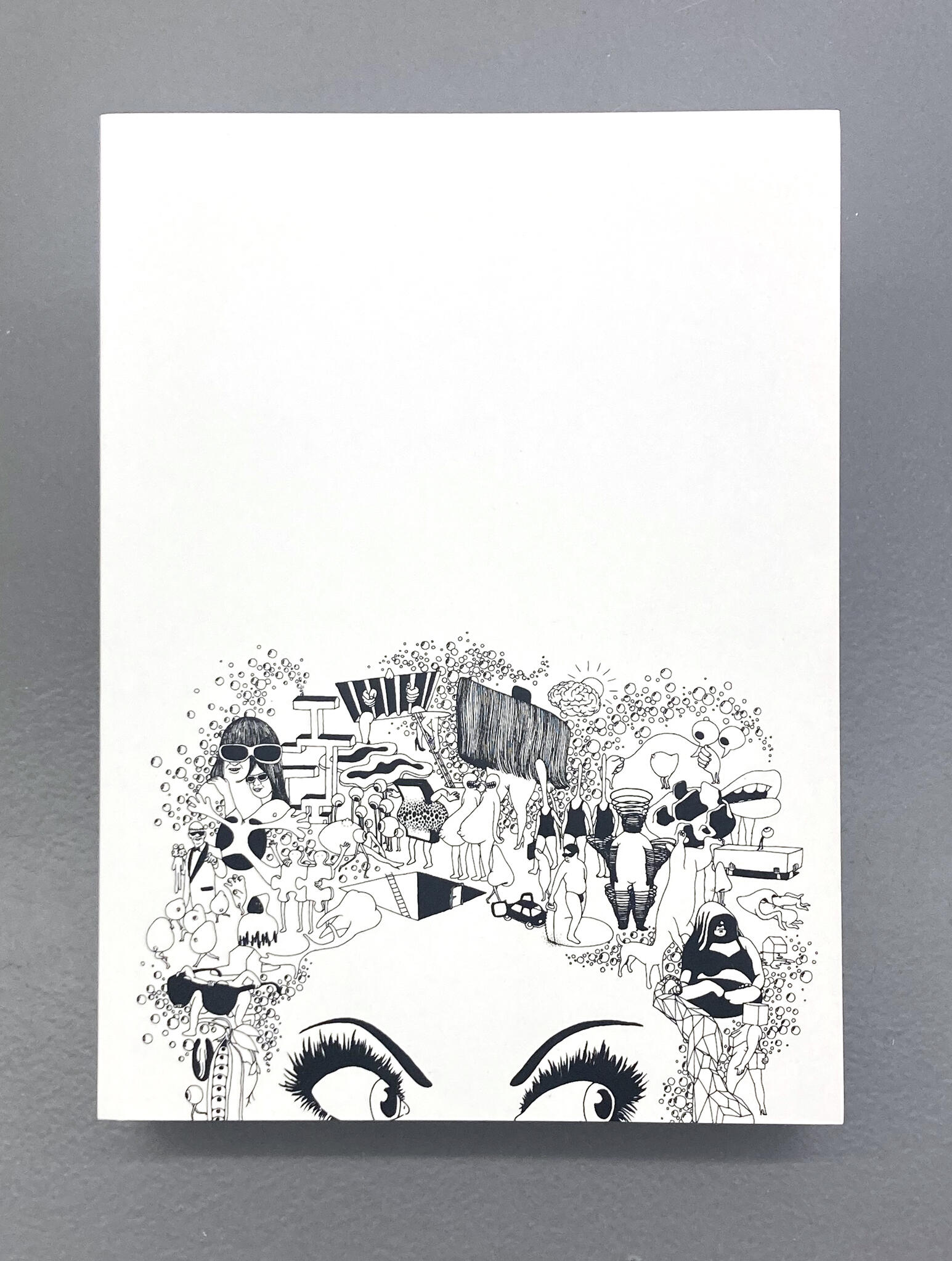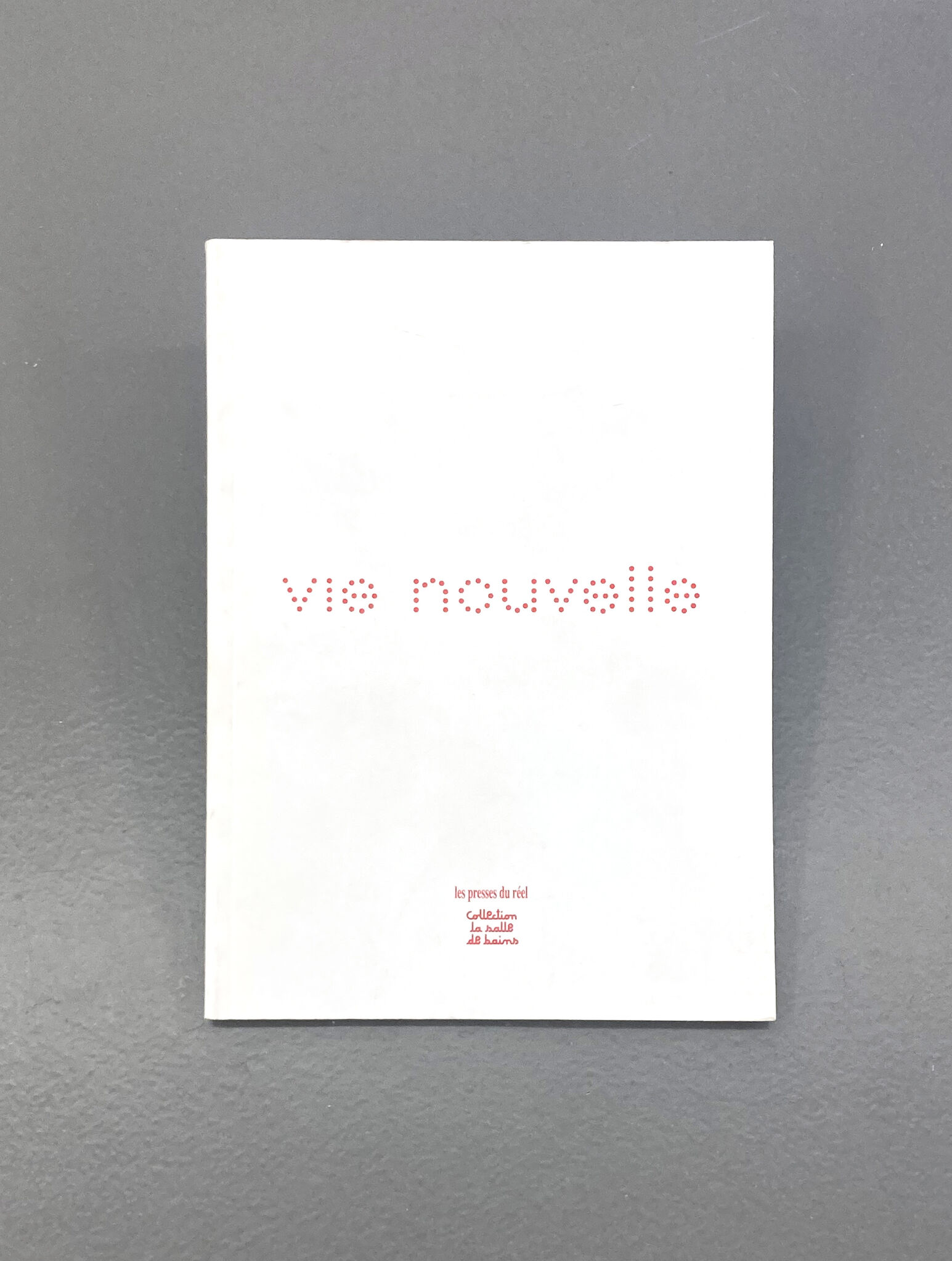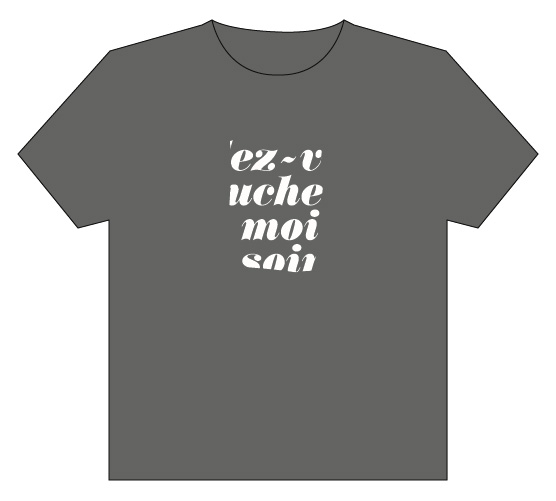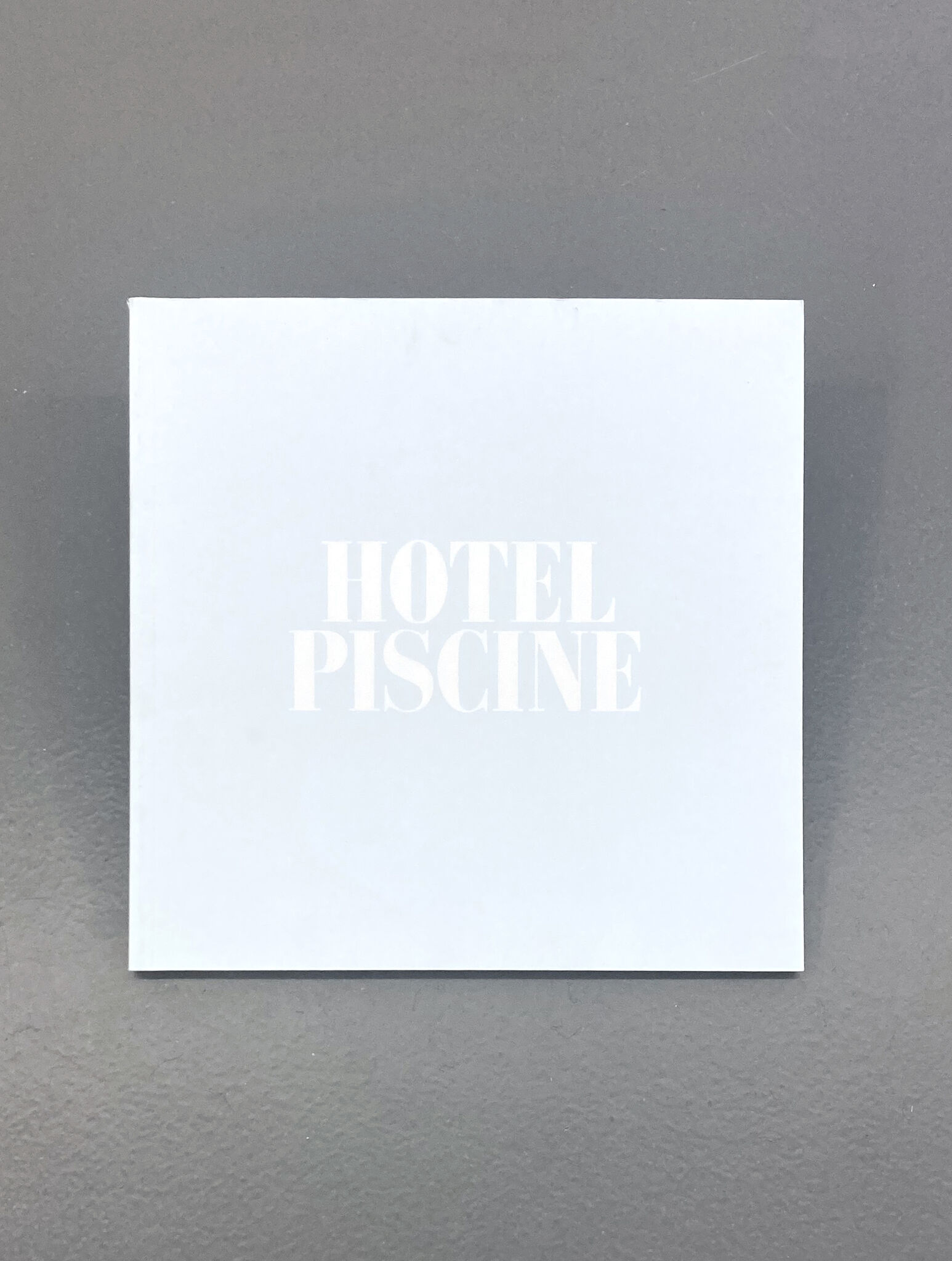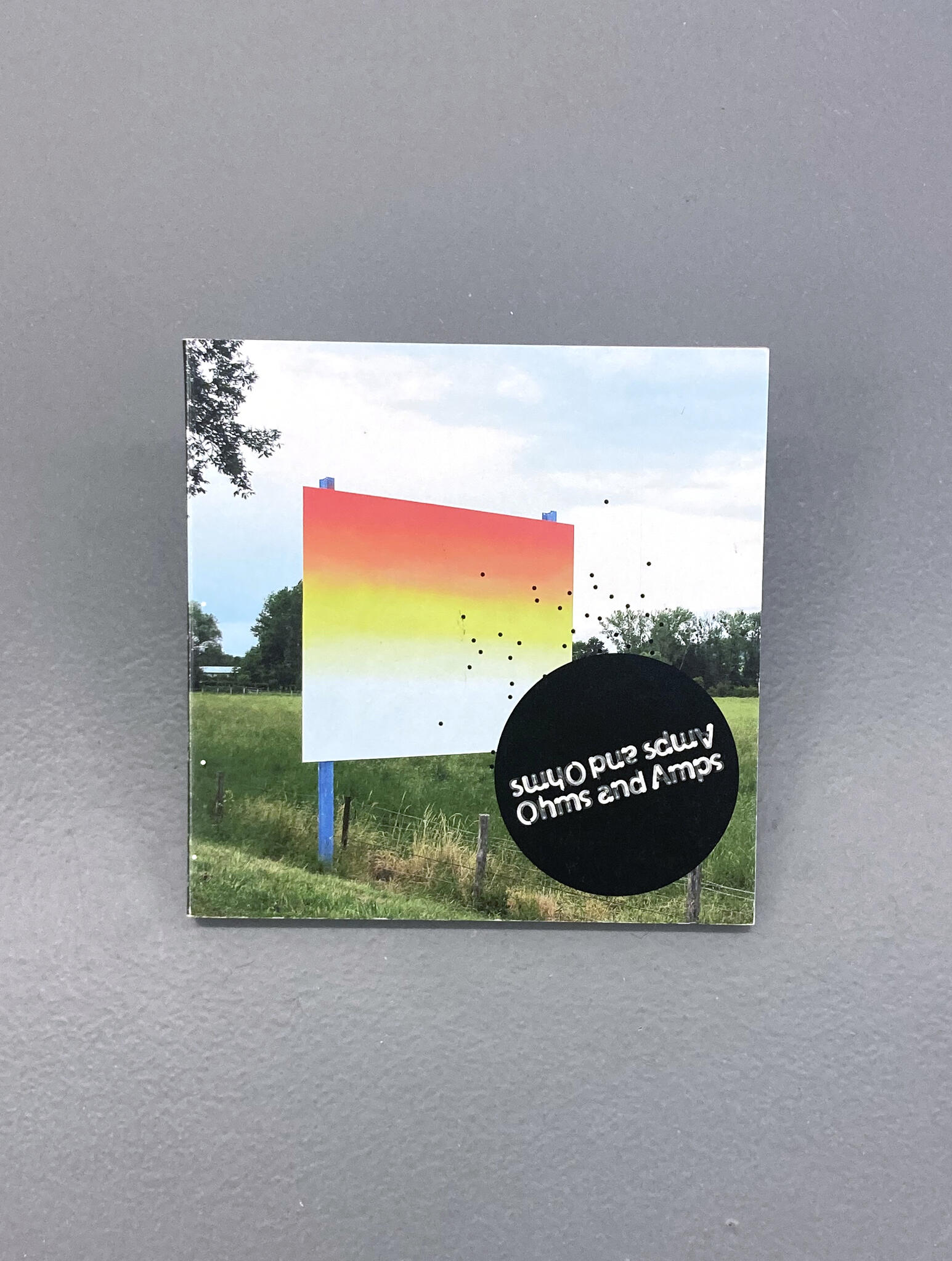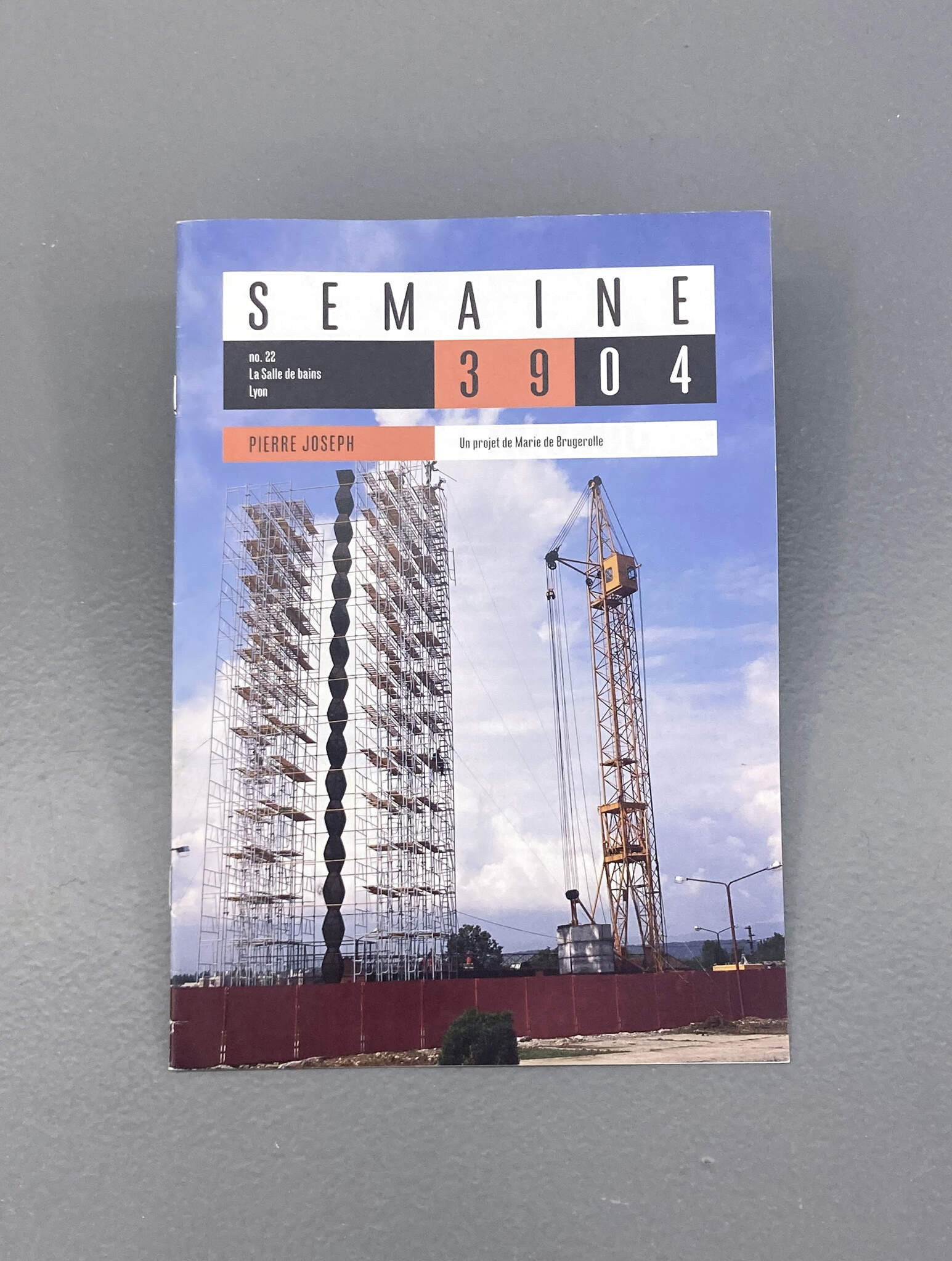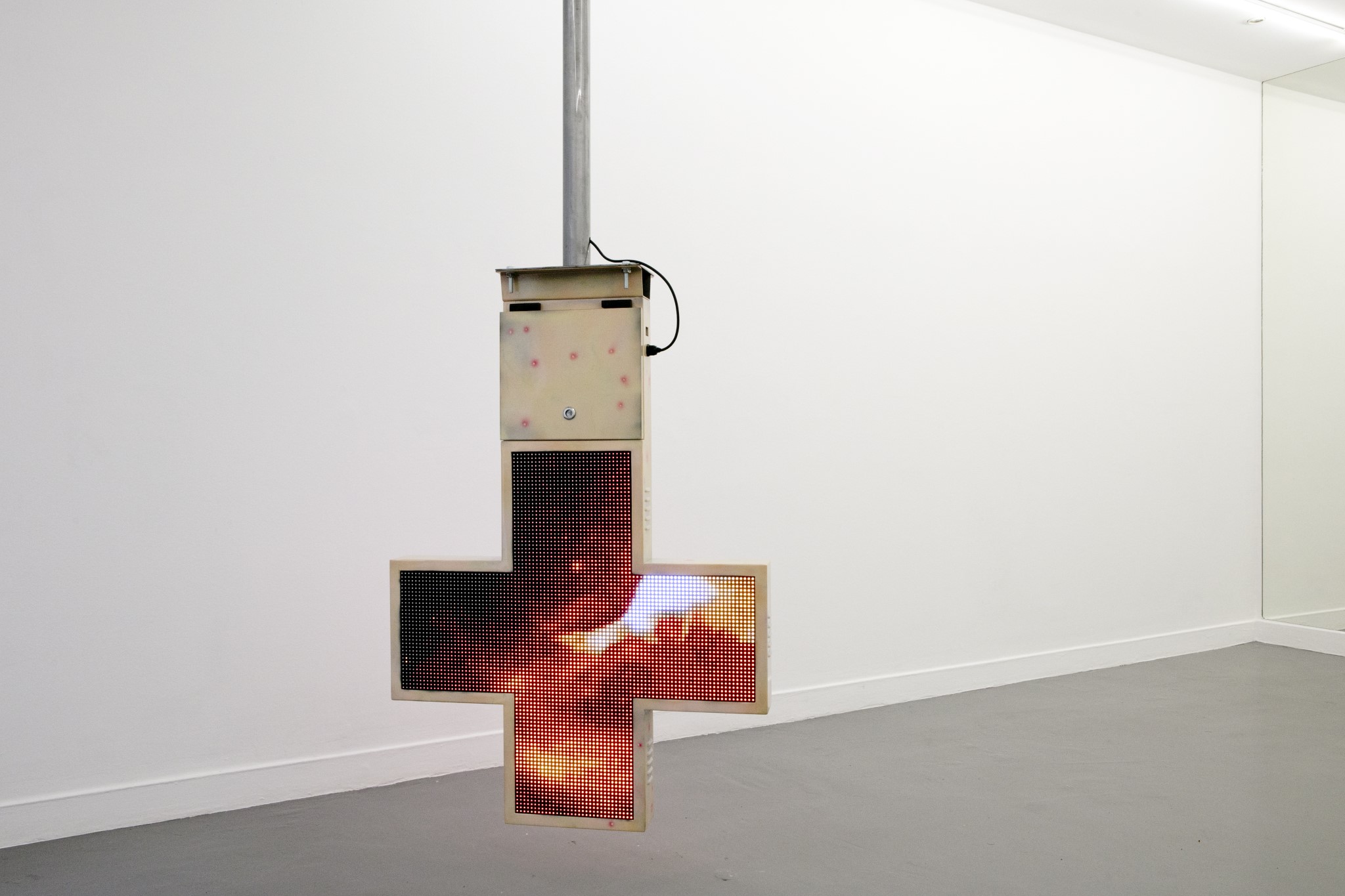
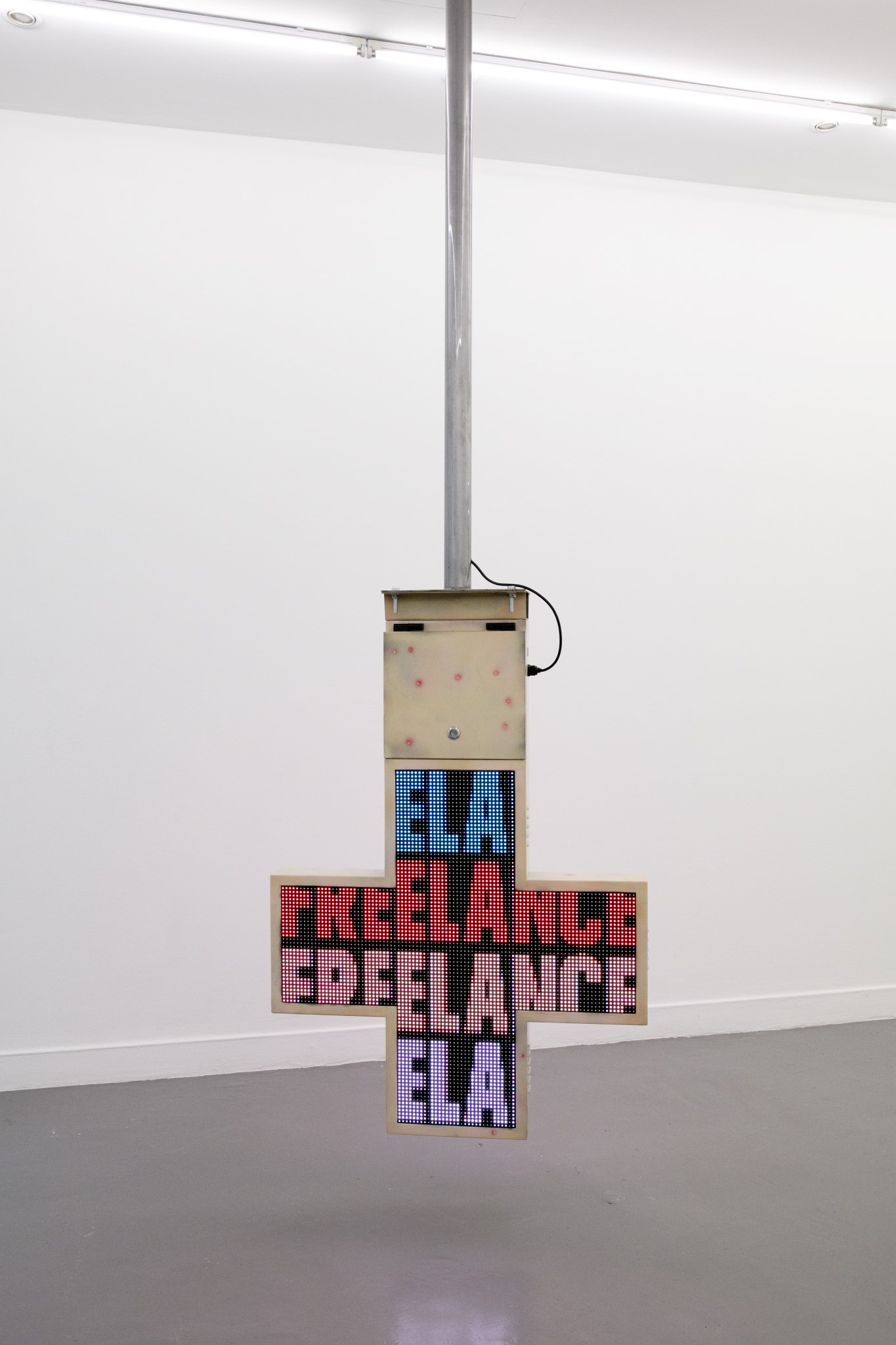
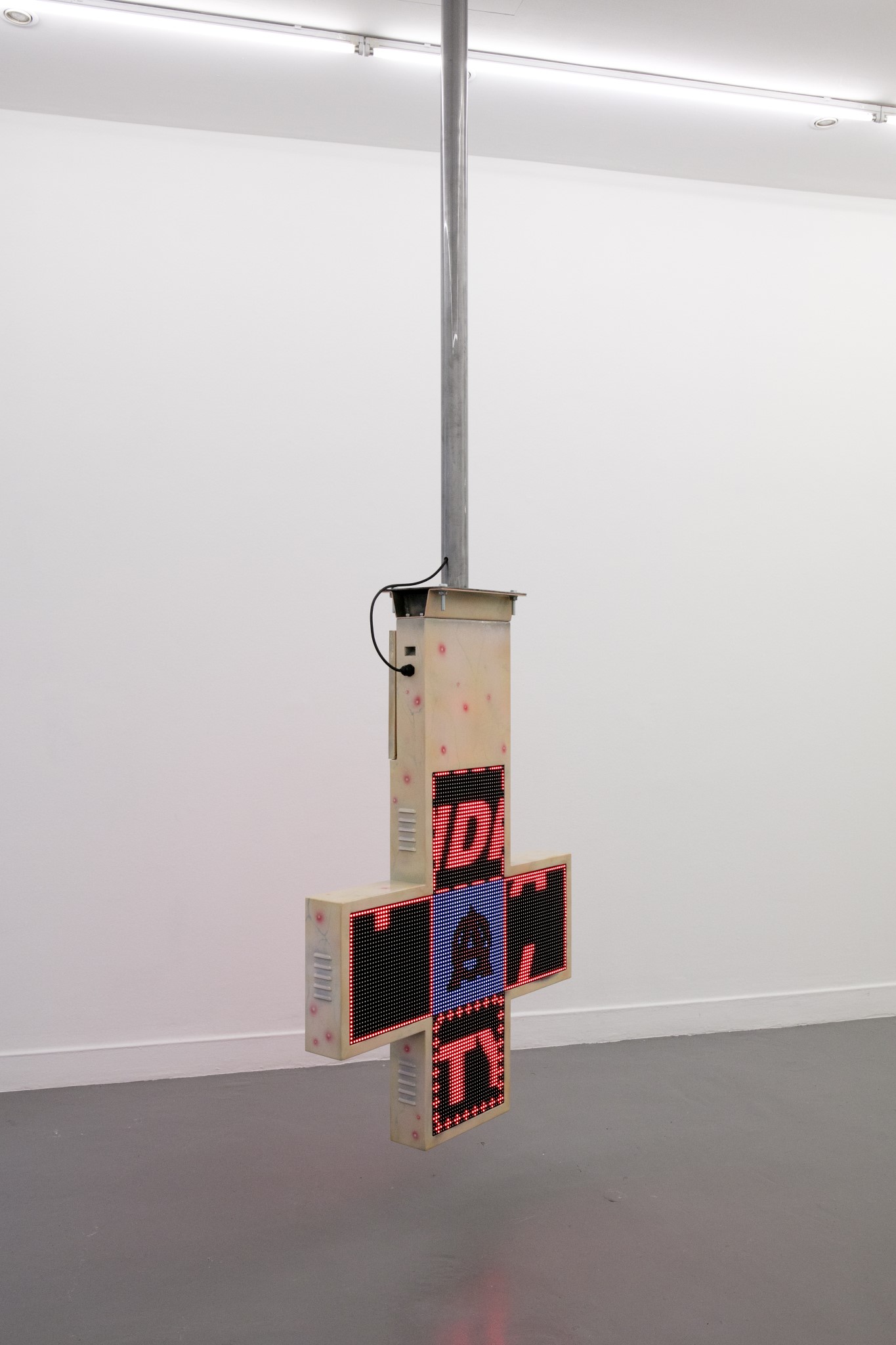
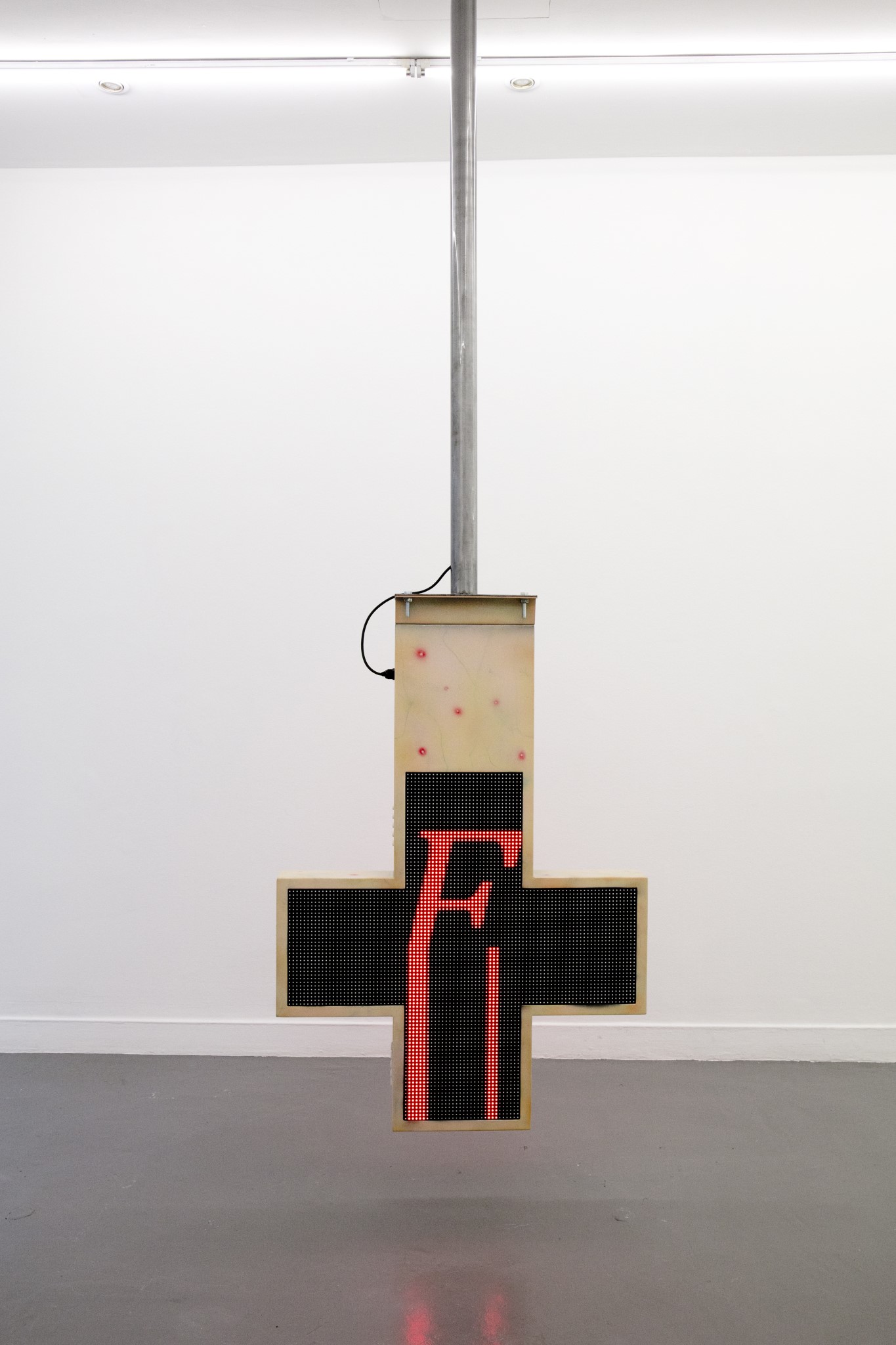
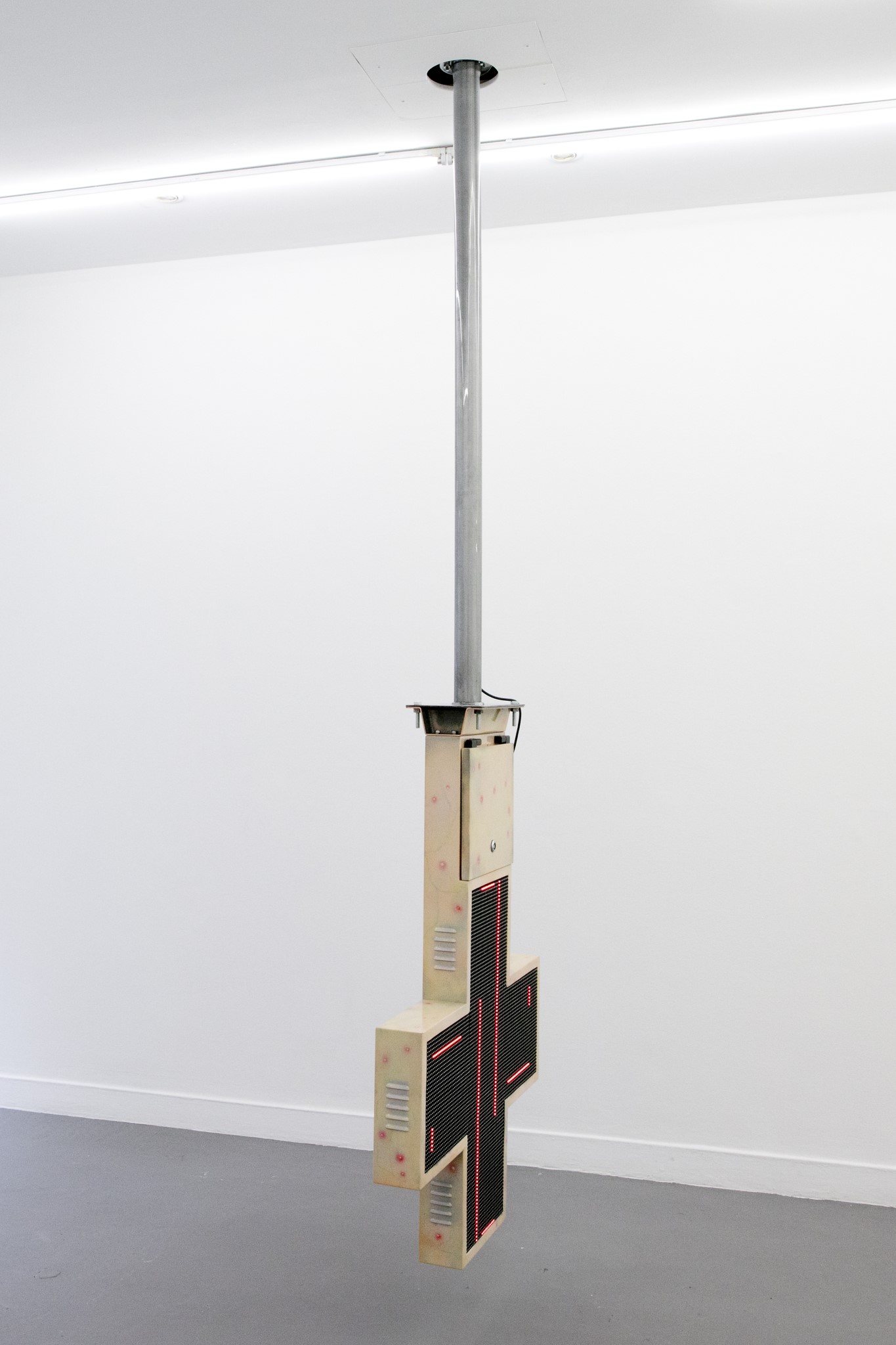
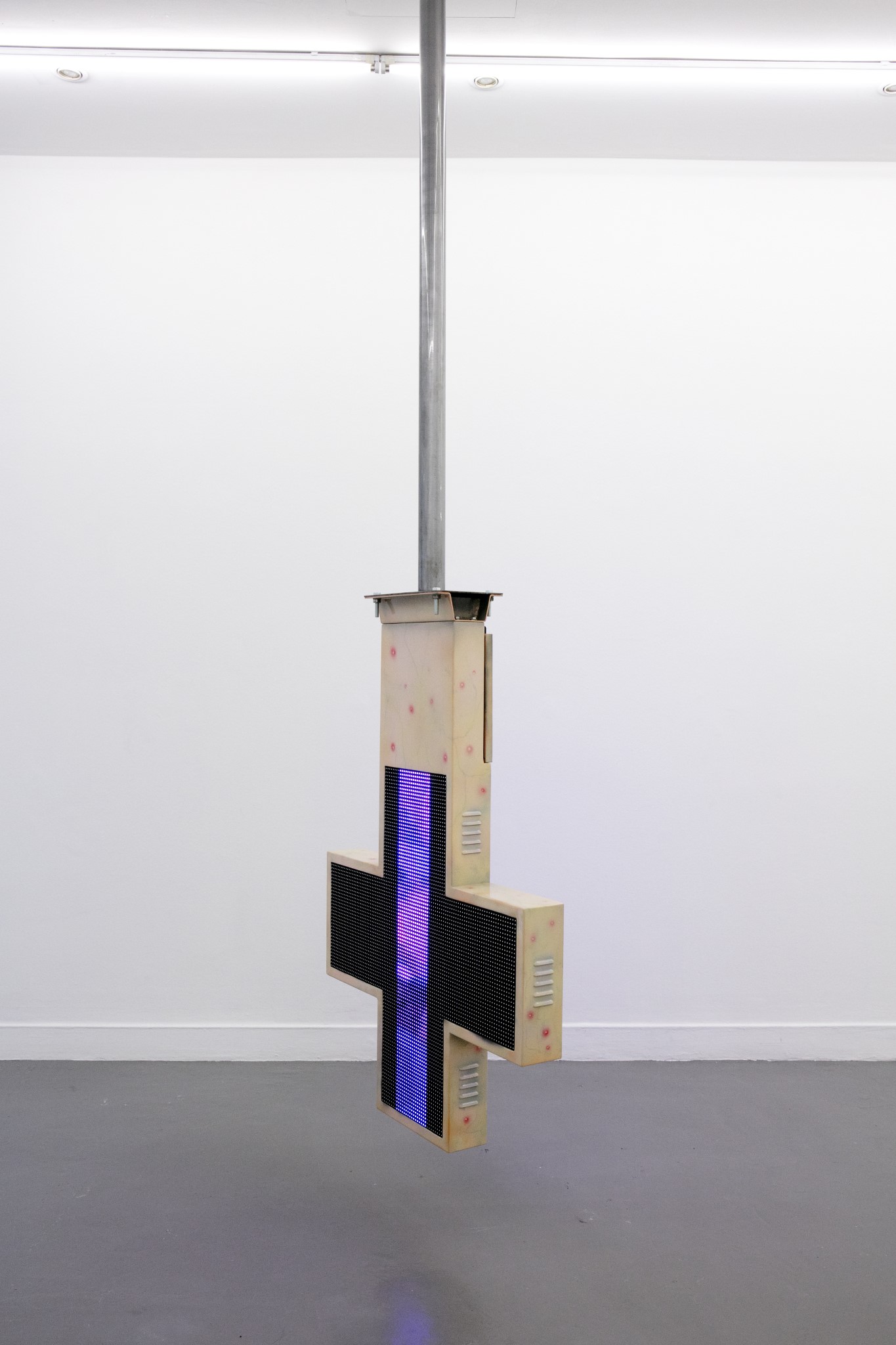
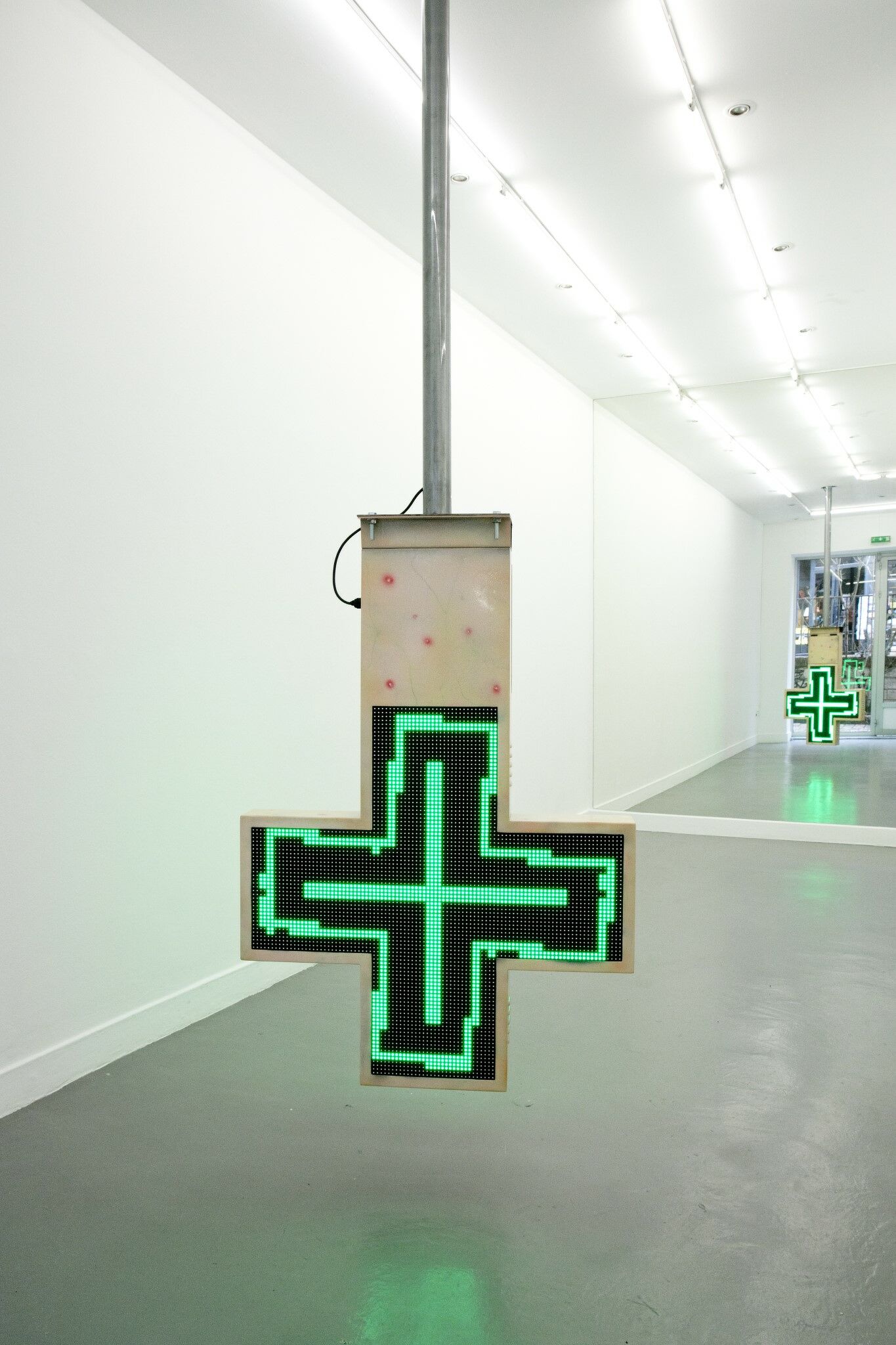

Gibber - salle 2, Mathis Altmann, la Salle de bains du 8 mars au 1er avril 2023
Photo : Jesús Alberto Benítez
Photo : Jesús Alberto Benítez
Gibber - room 2, Mathis Altmann, la Salle de bains from 8 March to 1st April 2023
Photo : Jesús Alberto Benítez
Photo : Jesús Alberto Benítez
Gibber - salle 2
Du 8 mars au 1 avril 2023From 8 March to 1 April 2023
En parallèle d’une pratique de la sculpture par assemblage, Mathis Altmann développe depuis quelques années une série d’enseignes lumineuses qui procèdent par détournement. Il a ainsi repris la signalétique de l’une des firmes internationales qui domine le marché des « solutions d’espaces de travail flexible » en y insérant diverses négations : wedontwork, wewontwork, weneverwork. Ces énoncés en leds sapent l’imaginaire communautaire sur lequel repose la publicité de la célèbre marque dont les immeubles de bureau prolifèrent à la place des friches industrielles à Berlin et dans plusieurs métropoles européennes. Mais l’épuisement du slogan met aussi en doute la possibilité d’un élan contestataire de la part d’une génération d’actif·ves – y compris de travailleur·euse·s de l’art – converti·e·s à la méritocratie ou complices de leur aliénation par une (sur)activité professionnelle qu’il·elle·s ont eux·elles-même créée.
Cela ne les empêche pas d’invoquer encore dans des discours engagés – par exemple, sur l’art – de vieux motifs d’insoumission au système productif tel l’abstentionnisme du Bartleby d’Herman Melville ou encore l’esprit révolutionnaire de Guy Debord dont le célèbre graffiti « NE TRAVAILLEZ JAMAIS », apparu dans les rues de Paris en 1953, annonçait le développement d’un arsenal théorique pour une critique radicale des conditions d’existence sous le règne du capitalisme avancé.
La croix lumineuse verte est de ces signes visuels inscrits dans la rétine du consommateur universel ; elle relève presque d’un langage inné. L’apercevoir dans la nuit ou dans une zone rurale est tantôt une promesse de salut (pour certain·e·s hypocondriaques) ou celle de trouver la présence du monde civilisé (pour certain·e·s citadin·e·s en vacances). Les sculptures lumineuses réalisées à partir de croix de pharmacie de Mathis Altmann exagèrent le pouvoir magnétique de l’objet détourné dans une expérience qui confine à la séance d’hypnose collective. Le soir du vernissage, s’est naturellement formée autour du dispositif une communauté de spectateur·ice·s disposé.e·s, comme tout être domestique au XXIe siècle, à laisser son cerveau émettre des ondes alpha devant une animation lumineuse, même pixelisée. Cette soudaine vision primitive se voit renforcée par le caractère rustre de cette barre de métal rotative qui suspend cette croix la tête en bas dans une lointaine évocation de quelque supplice médiéval ou cérémonie sataniste. Le capot customisé par une peinture digne d’une attraction foraine en fait un corps malade, couvert de pustule et de varicosité.
Certes, ne devriez-vous pas être en train de travailler ?
Il n’était pas tout à fait prévu que la présentation de cette oeuvre de Mathis Altmann à la Salle de bains coïncide avec le mouvement social en France. L’artiste analyse depuis longtemps le rapport « pharmacologique » que nous entretenons au travail dans la société contemporaine : quand le remède est aussi le poison et que la source du problème et des solutions apportées est la même (l’on pense entre autre aux opérations managériales de « bien-être au travail »). Considéré comme un travail en cours, l’animation est un montage de texte et d’images trouvées sur internet, comme souvent chez Altmann, elles tentent d’encadrer l’esprit du capitalisme à l’ère de l’hyperactivité.
Cela ne les empêche pas d’invoquer encore dans des discours engagés – par exemple, sur l’art – de vieux motifs d’insoumission au système productif tel l’abstentionnisme du Bartleby d’Herman Melville ou encore l’esprit révolutionnaire de Guy Debord dont le célèbre graffiti « NE TRAVAILLEZ JAMAIS », apparu dans les rues de Paris en 1953, annonçait le développement d’un arsenal théorique pour une critique radicale des conditions d’existence sous le règne du capitalisme avancé.
La croix lumineuse verte est de ces signes visuels inscrits dans la rétine du consommateur universel ; elle relève presque d’un langage inné. L’apercevoir dans la nuit ou dans une zone rurale est tantôt une promesse de salut (pour certain·e·s hypocondriaques) ou celle de trouver la présence du monde civilisé (pour certain·e·s citadin·e·s en vacances). Les sculptures lumineuses réalisées à partir de croix de pharmacie de Mathis Altmann exagèrent le pouvoir magnétique de l’objet détourné dans une expérience qui confine à la séance d’hypnose collective. Le soir du vernissage, s’est naturellement formée autour du dispositif une communauté de spectateur·ice·s disposé.e·s, comme tout être domestique au XXIe siècle, à laisser son cerveau émettre des ondes alpha devant une animation lumineuse, même pixelisée. Cette soudaine vision primitive se voit renforcée par le caractère rustre de cette barre de métal rotative qui suspend cette croix la tête en bas dans une lointaine évocation de quelque supplice médiéval ou cérémonie sataniste. Le capot customisé par une peinture digne d’une attraction foraine en fait un corps malade, couvert de pustule et de varicosité.
Certes, ne devriez-vous pas être en train de travailler ?
Il n’était pas tout à fait prévu que la présentation de cette oeuvre de Mathis Altmann à la Salle de bains coïncide avec le mouvement social en France. L’artiste analyse depuis longtemps le rapport « pharmacologique » que nous entretenons au travail dans la société contemporaine : quand le remède est aussi le poison et que la source du problème et des solutions apportées est la même (l’on pense entre autre aux opérations managériales de « bien-être au travail »). Considéré comme un travail en cours, l’animation est un montage de texte et d’images trouvées sur internet, comme souvent chez Altmann, elles tentent d’encadrer l’esprit du capitalisme à l’ère de l’hyperactivité.
Along with his sculpture work based on assemblage, for several years now Mathis Altmann has been developing a series of illuminated signs that work by reappropriation. He has borrowed the signage of one of the international companies that dominate the market for «flexible workspace solutions» by inserting negations in them, viz., wedontwork, wewontwork, weneverwork. Written out in LEDs, these statements undermine the shared imagery backing advertising for the famous brand whose office buildings seem to proliferate in industrial wastelands around Berlin and several other European cities. Yet the exhaustion wafting through the slogan also calls into question the possibility of the urge to protest and fight for change by a generation of activists – including art workers – won over to the idea of meritocracy or complicit in their own alienation through a professional (over) activity that they themselves have produced.
This doesn’t stop them from invoking activist statements, touching on art, for example, old motifs about not giving into the system of production like the refusal posed by Herman Melville’s Bartleby, or the revolutionary spirit of Guy Debord, whose famous «NEVER WORK» graffiti appeared in the streets of Paris in 1953, announcing the development of a theoretical arsenal for a radical critique of existential conditions in the reign of advanced capitalism.
The lighted green cross is one of those visual signs that are burned into the retina of the everyman consumer; it almost partakes of an innate language. To spot it at night or in a rural zone is tantamount to laying eyes on a promise of salvation (for certain hypochondriacs) or stumbling on civilization (for certain city-dwellers on vacation). Altmann’s light sculptures fashioned from the pharmacy cross exaggerate the magnetic power of the reappropriated object in an experience that verges on an instance of group hypnosis. On the evening of the show opening, a group naturally formed around the piece, a community of viewers who were willing, like any domestic being in the 21st century, to let their brains emit alpha waves in front of a glowing animation, even one that is pixelated. This sudden primitive vision is reinforced by the unrefined character of that rotating metal bar that is holding the cross with its «head» pointing down in a distant suggestion of some medieval torment or Satanic ceremony. The automobile hood that has been customized with a painting worthy of a fairground sideshow makes it into a sick body covered with pimples and swollen veinlike ridges.
Of course, you should be working, right?
It wasn’t quite overtly planned that the Salle de bains’s display of this piece by Altmann should coincide with the social unrest taking place in France right now. The artist has long been analyzing our «pharmacological» relationship to work in contemporary society, i.e. when the remedy is also a poison and the source of both the problem and the proposed solutions is one and the same (we are reminded of several things, including those managerial taskforce operations for «workplace well-being»). Seen as a work in progress, the animated piece is a montage of text and images found on the internet, and as is often the case in Altmann’s work, these images attempt to frame the spirit of capitalism in the age of hyperactivity.
translation : John O'Toole
This doesn’t stop them from invoking activist statements, touching on art, for example, old motifs about not giving into the system of production like the refusal posed by Herman Melville’s Bartleby, or the revolutionary spirit of Guy Debord, whose famous «NEVER WORK» graffiti appeared in the streets of Paris in 1953, announcing the development of a theoretical arsenal for a radical critique of existential conditions in the reign of advanced capitalism.
The lighted green cross is one of those visual signs that are burned into the retina of the everyman consumer; it almost partakes of an innate language. To spot it at night or in a rural zone is tantamount to laying eyes on a promise of salvation (for certain hypochondriacs) or stumbling on civilization (for certain city-dwellers on vacation). Altmann’s light sculptures fashioned from the pharmacy cross exaggerate the magnetic power of the reappropriated object in an experience that verges on an instance of group hypnosis. On the evening of the show opening, a group naturally formed around the piece, a community of viewers who were willing, like any domestic being in the 21st century, to let their brains emit alpha waves in front of a glowing animation, even one that is pixelated. This sudden primitive vision is reinforced by the unrefined character of that rotating metal bar that is holding the cross with its «head» pointing down in a distant suggestion of some medieval torment or Satanic ceremony. The automobile hood that has been customized with a painting worthy of a fairground sideshow makes it into a sick body covered with pimples and swollen veinlike ridges.
Of course, you should be working, right?
It wasn’t quite overtly planned that the Salle de bains’s display of this piece by Altmann should coincide with the social unrest taking place in France right now. The artist has long been analyzing our «pharmacological» relationship to work in contemporary society, i.e. when the remedy is also a poison and the source of both the problem and the proposed solutions is one and the same (we are reminded of several things, including those managerial taskforce operations for «workplace well-being»). Seen as a work in progress, the animated piece is a montage of text and images found on the internet, and as is often the case in Altmann’s work, these images attempt to frame the spirit of capitalism in the age of hyperactivity.
translation : John O'Toole
Liste des œuvres :
List of works :
Devine Powerlifestyles, 2023
croix de pharmacie LED, peinture acrylique sur aluminium,
boucle vidéo 13min30
263x80x10 cm
croix de pharmacie LED, peinture acrylique sur aluminium,
boucle vidéo 13min30
263x80x10 cm
Devine Powerlifestyles, 2023
pharmacy cross LED, acrylic paint on aluminium,
video loop 13min30
263x80x10 cm
pharmacy cross LED, acrylic paint on aluminium,
video loop 13min30
263x80x10 cm
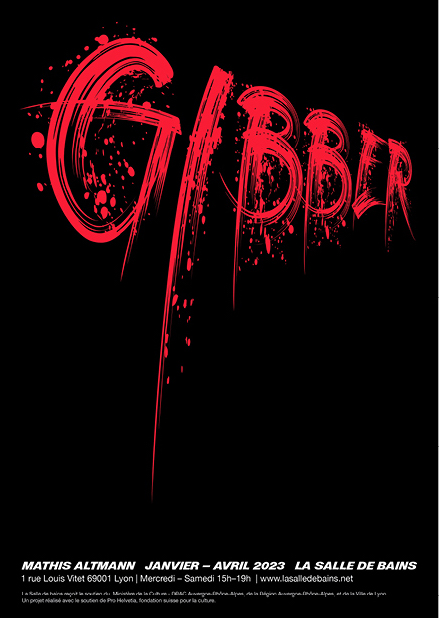
Gibber - salle 2, 2023
Affiche
Mathis Altmann (1987) vit et travaille à Berlin et Zürich.
Son travail a fait l’objet d’expositions monographiques en Allemagne, à Efremidis à Berlin en 2021 ; en Italie, à l’Institut Suisse de Milan en 2018 et en Suisse, au Kunstmuseum de Wintherthur en 2021 et à Truth & Consequences à Genève en 2016. Il a également participé à de nombreuses expositions collectives en 2021 telles que Bijoux ! à Fitzpatrick Gallery à Paris ; Nimmersatt? Imagining Society without Growth au Westfälischer Kunstverein à Münster ; Macht! Licht! au Kunstmuseum Wolfsburg, en Allemagne et en 2020 comme Grand Miniature à Zurich ou encore ANNEMARIE VON MATT. JE NE M’ENNUIE JAMAIS, ON M’ENNUIE au Centre Culturel Suisse à Paris.
Il est représenté par Fitzpatrick Gallery à Paris.
Son travail a fait l’objet d’expositions monographiques en Allemagne, à Efremidis à Berlin en 2021 ; en Italie, à l’Institut Suisse de Milan en 2018 et en Suisse, au Kunstmuseum de Wintherthur en 2021 et à Truth & Consequences à Genève en 2016. Il a également participé à de nombreuses expositions collectives en 2021 telles que Bijoux ! à Fitzpatrick Gallery à Paris ; Nimmersatt? Imagining Society without Growth au Westfälischer Kunstverein à Münster ; Macht! Licht! au Kunstmuseum Wolfsburg, en Allemagne et en 2020 comme Grand Miniature à Zurich ou encore ANNEMARIE VON MATT. JE NE M’ENNUIE JAMAIS, ON M’ENNUIE au Centre Culturel Suisse à Paris.
Il est représenté par Fitzpatrick Gallery à Paris.
Mathis Altmann (1987) lives and works between Berlin and Zurich.
His work has been the subject of monographic exhibitions in Germany, at Efremidis in Berlin in 2021; in Italy, at the Swiss Institute in Milan in 2018 and in Switzerland, at the Kunstmuseum in Wintherthur in 2021 and at Truth & Consequences in Geneva in 2016. He has also participated in numerous group exhibitions in 2021 such as Bijoux! at Fitzpatrick Gallery in Paris; Nimmersatt? Imagining Society without Growth at the Westfälischer Kunstverein in Münster; Macht! Licht! at the Kunstmuseum Wolfsburg, Germany and in 2020 as Grand Miniature in Zurich or ANNEMARIE VON MATT. JE NE M’ENNUIE JAMAIS, ON M’ENNUIE at the Centre Culturel Suisse in Paris.
He is represented by Fitzpatrick Gallery.
His work has been the subject of monographic exhibitions in Germany, at Efremidis in Berlin in 2021; in Italy, at the Swiss Institute in Milan in 2018 and in Switzerland, at the Kunstmuseum in Wintherthur in 2021 and at Truth & Consequences in Geneva in 2016. He has also participated in numerous group exhibitions in 2021 such as Bijoux! at Fitzpatrick Gallery in Paris; Nimmersatt? Imagining Society without Growth at the Westfälischer Kunstverein in Münster; Macht! Licht! at the Kunstmuseum Wolfsburg, Germany and in 2020 as Grand Miniature in Zurich or ANNEMARIE VON MATT. JE NE M’ENNUIE JAMAIS, ON M’ENNUIE at the Centre Culturel Suisse in Paris.
He is represented by Fitzpatrick Gallery.
La Salle de bains reçoit le soutien du Ministère de la Culture DRAC Auvergne-Rhône-Alpes,
de la Région Auvergne-Rhône-Alpes et de la Ville de Lyon.
Cette exposition reçoit le soutien de Pro Helvetia, Fondation suisse pour la culture.
de la Région Auvergne-Rhône-Alpes et de la Ville de Lyon.
Cette exposition reçoit le soutien de Pro Helvetia, Fondation suisse pour la culture.
